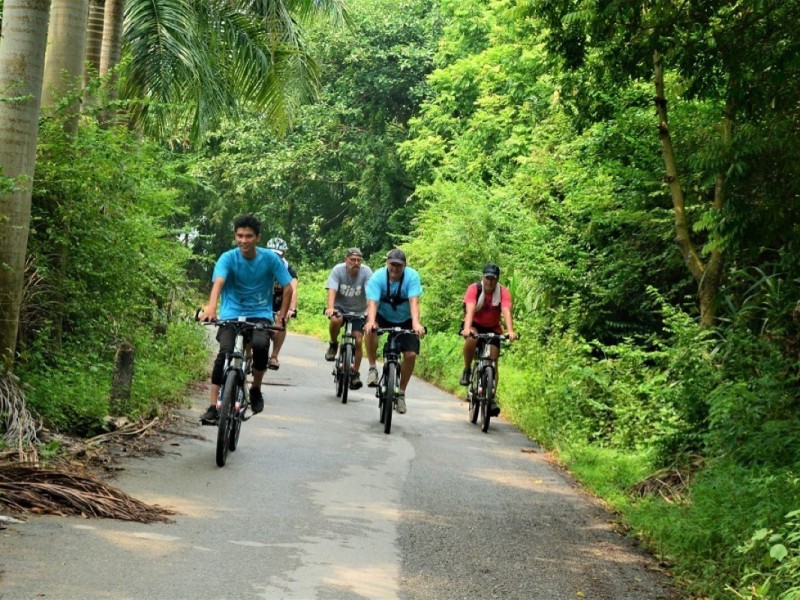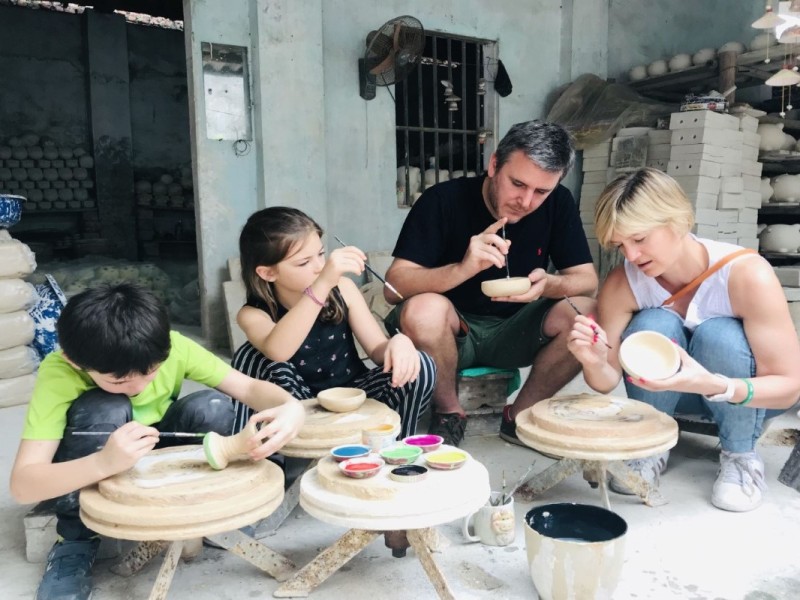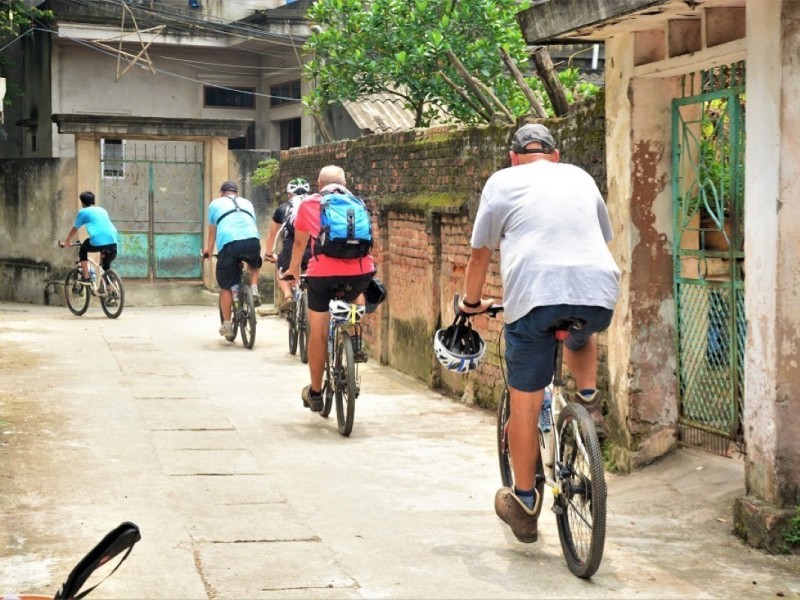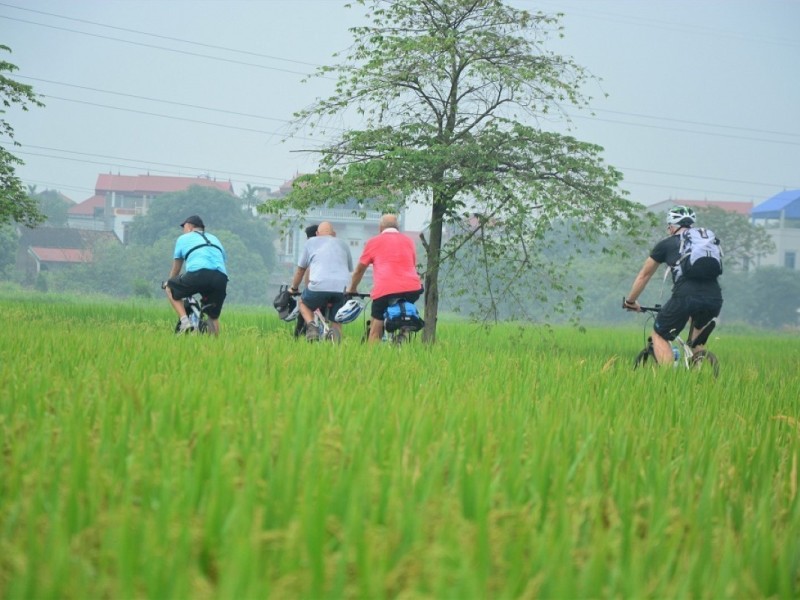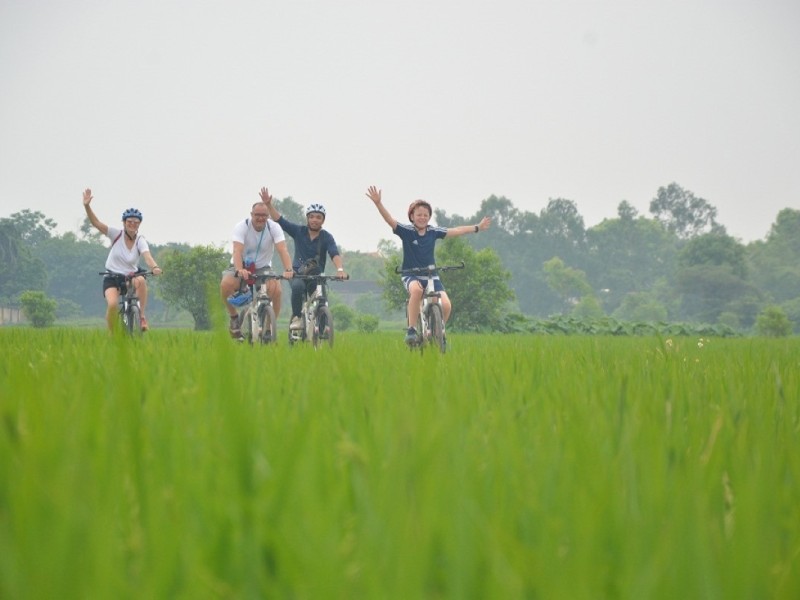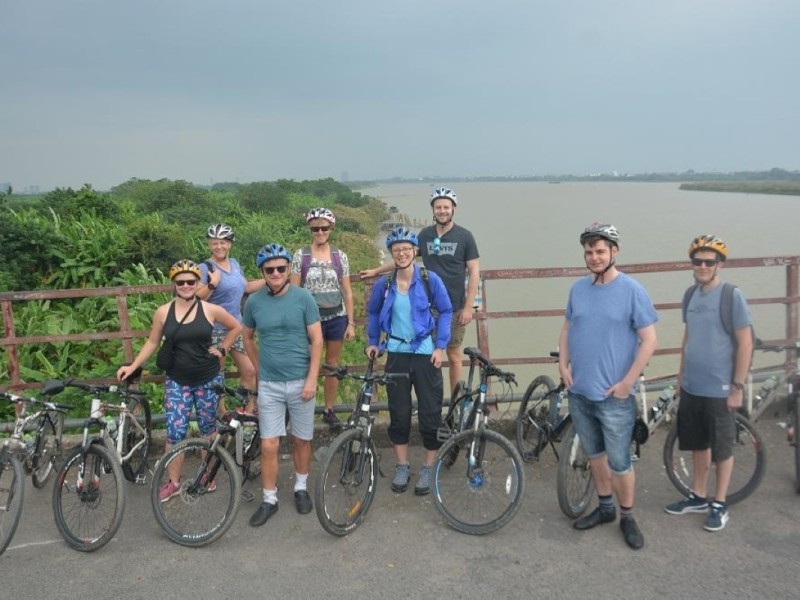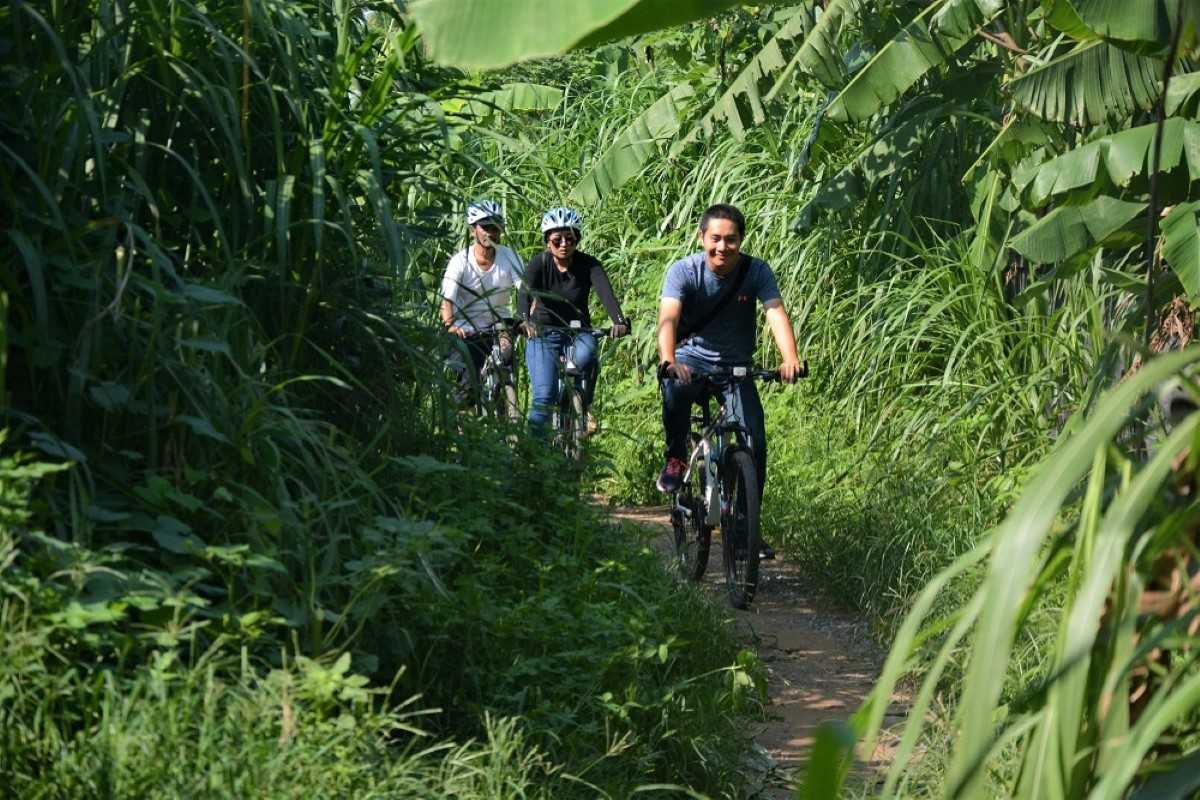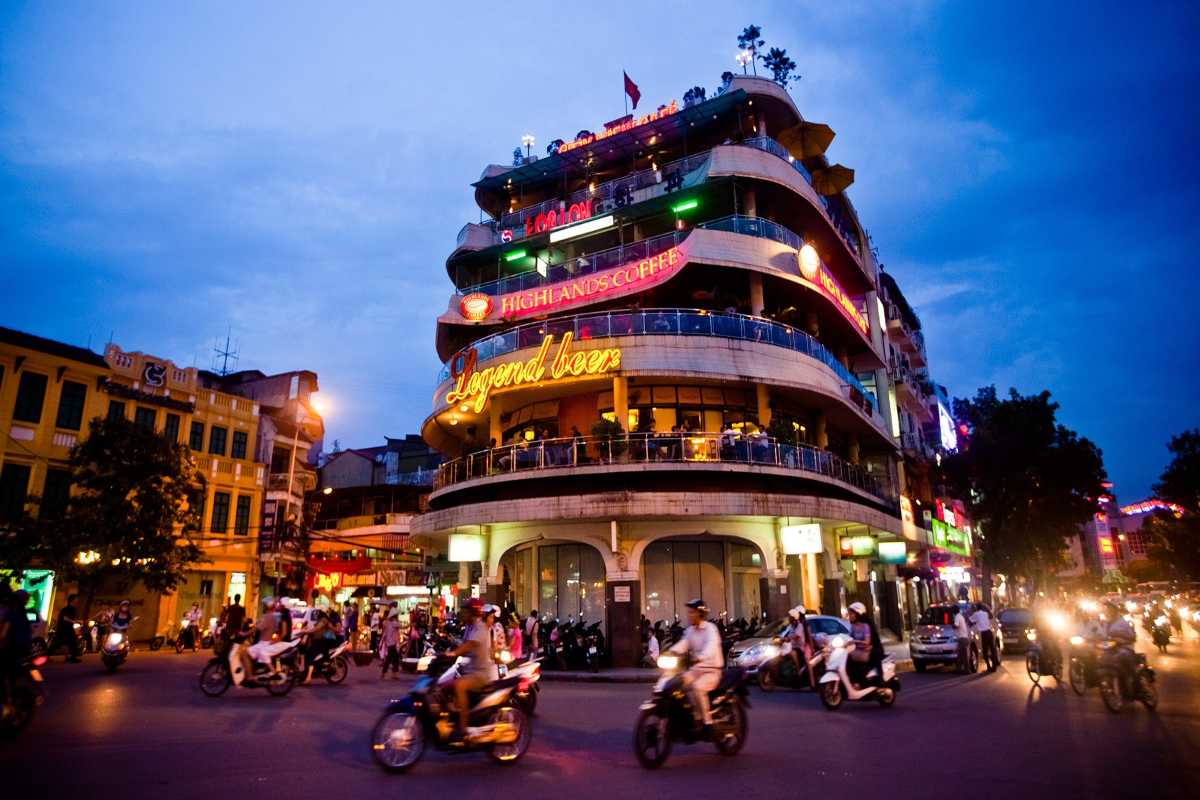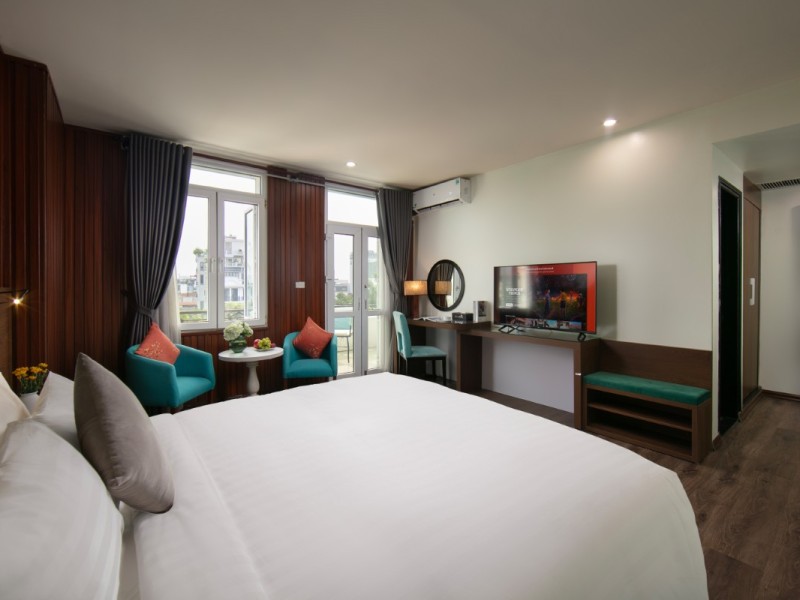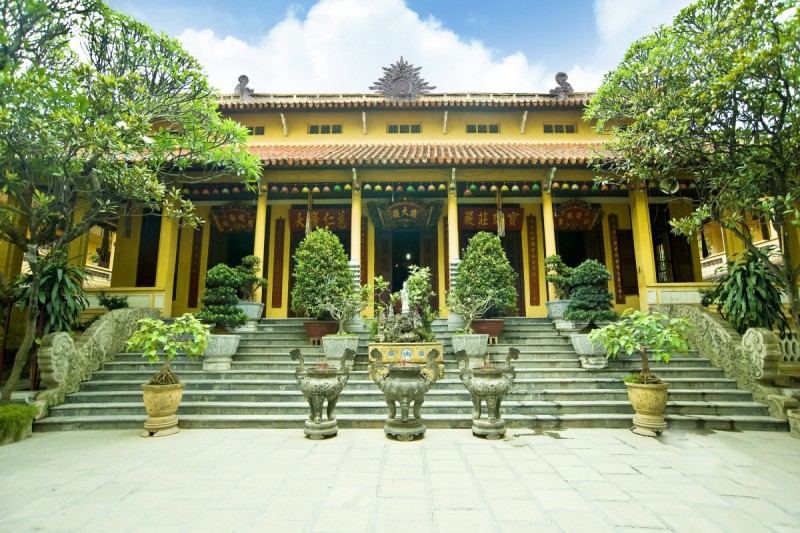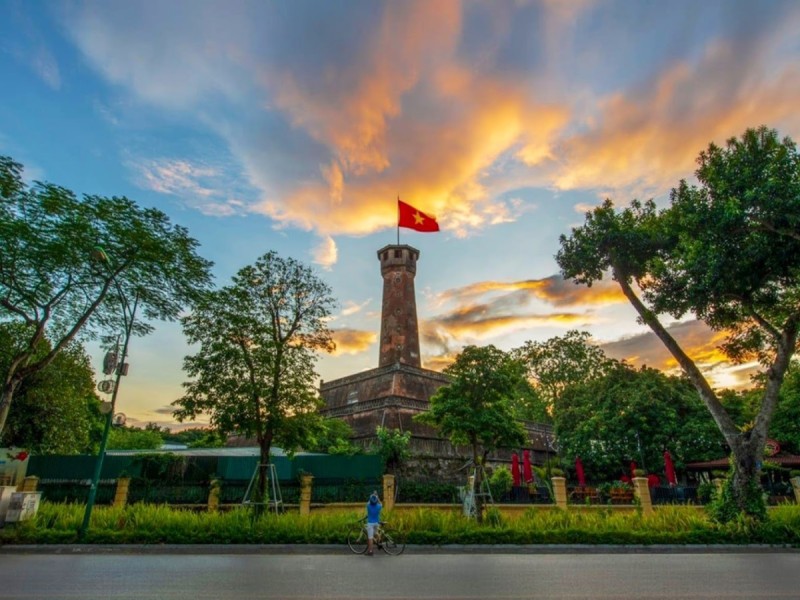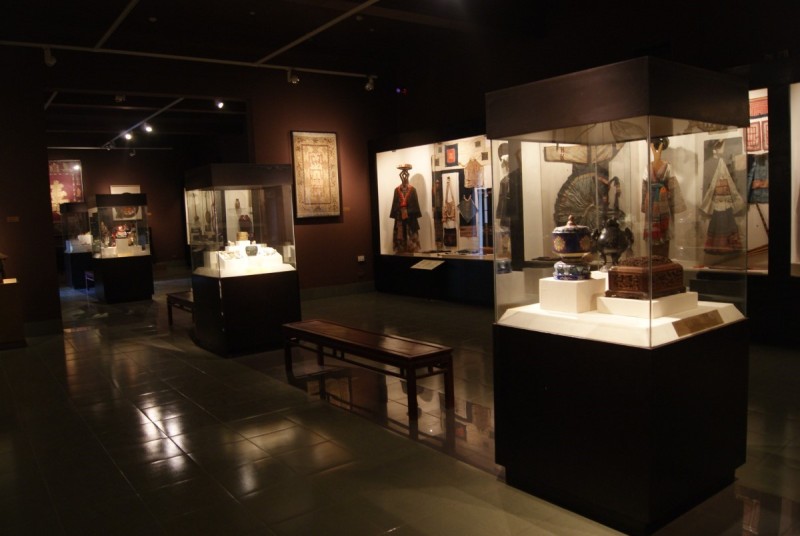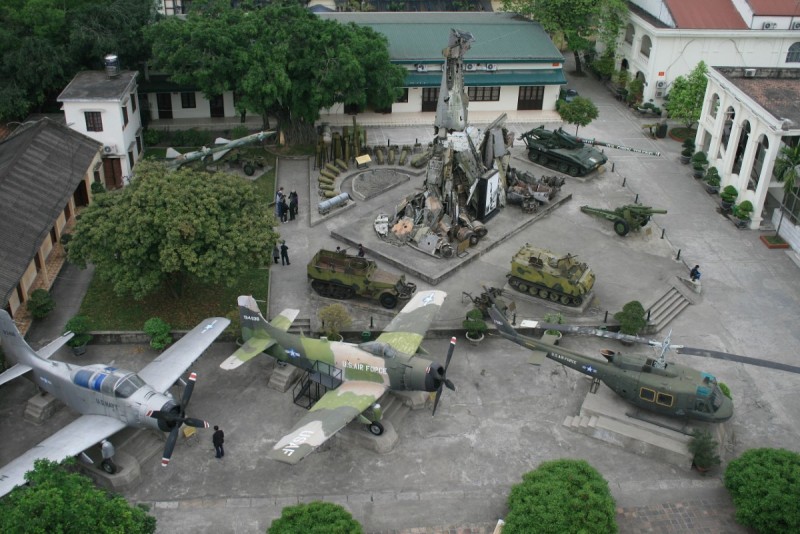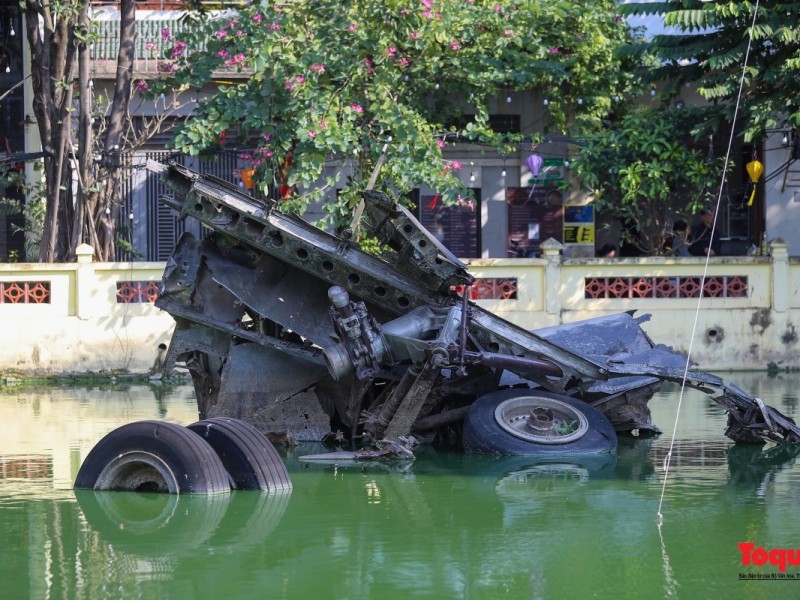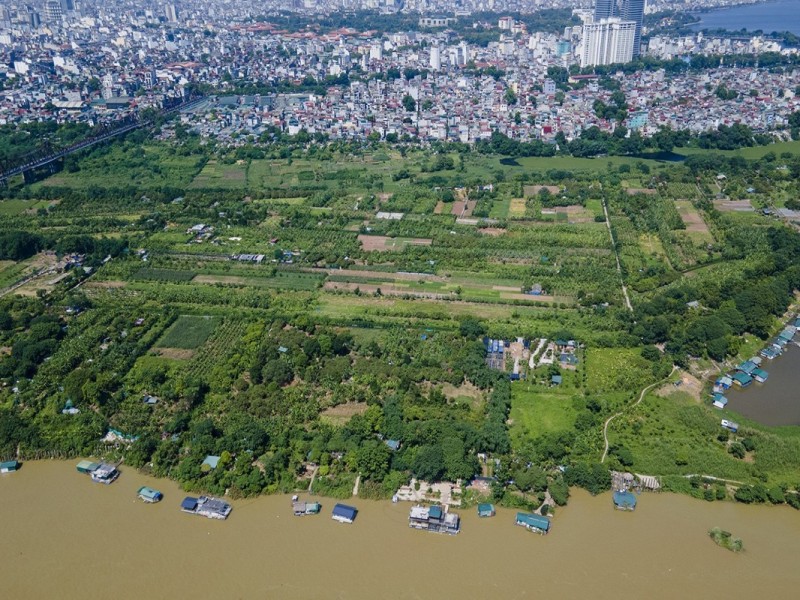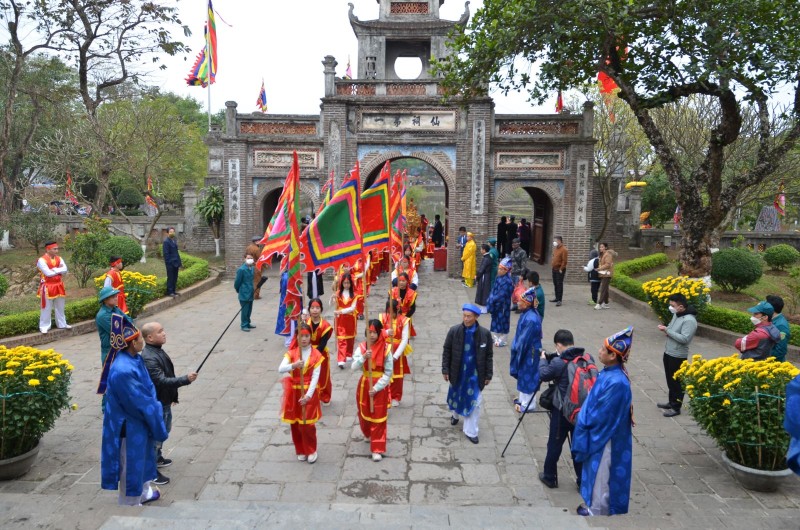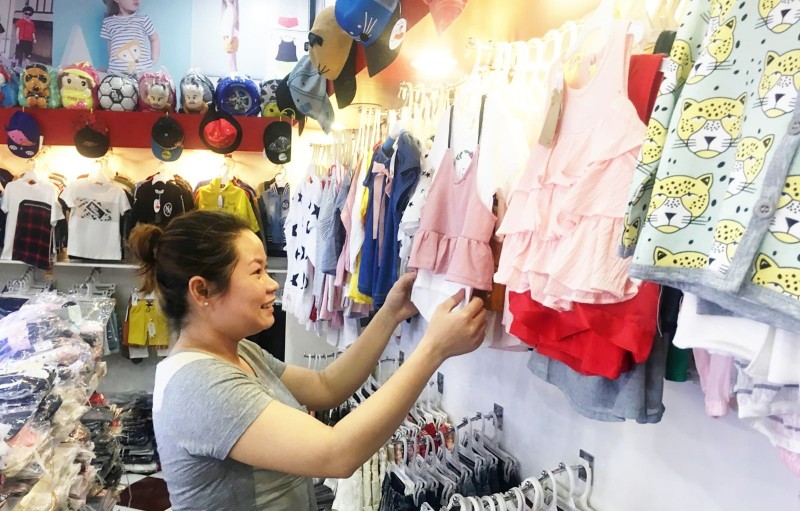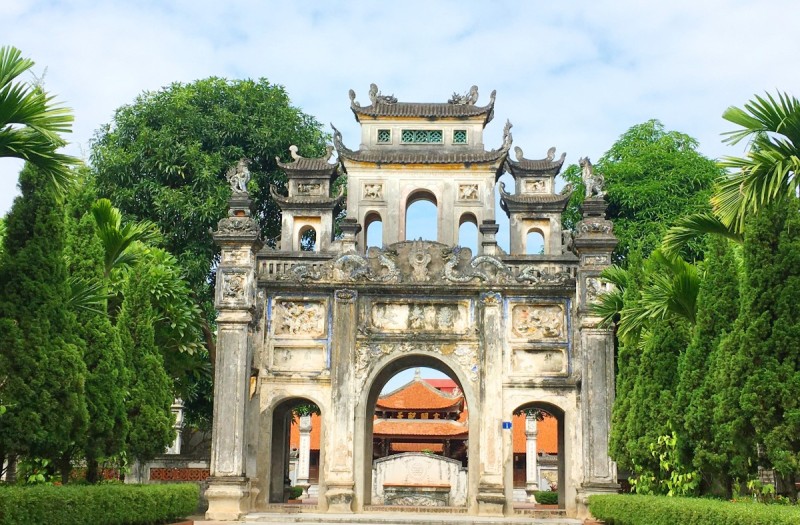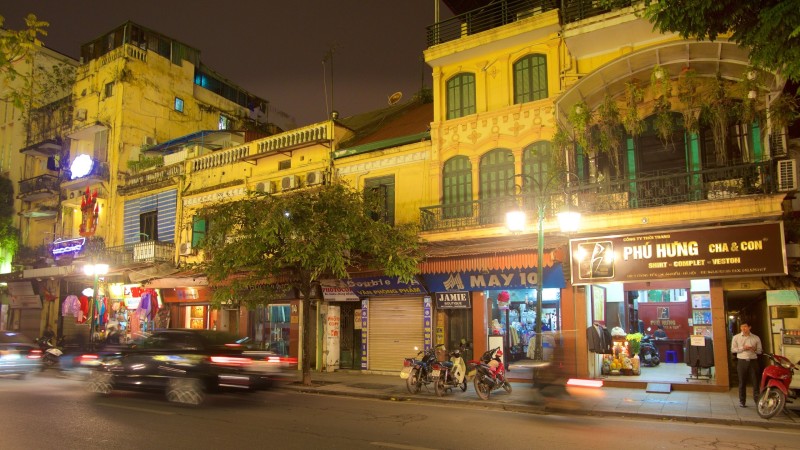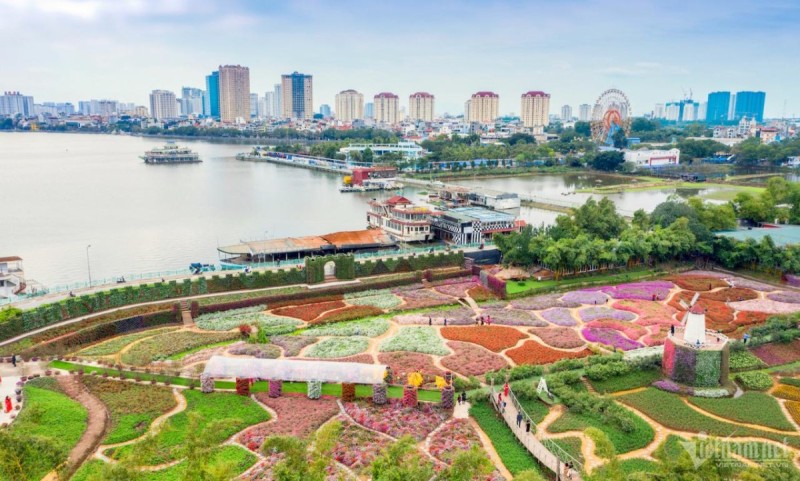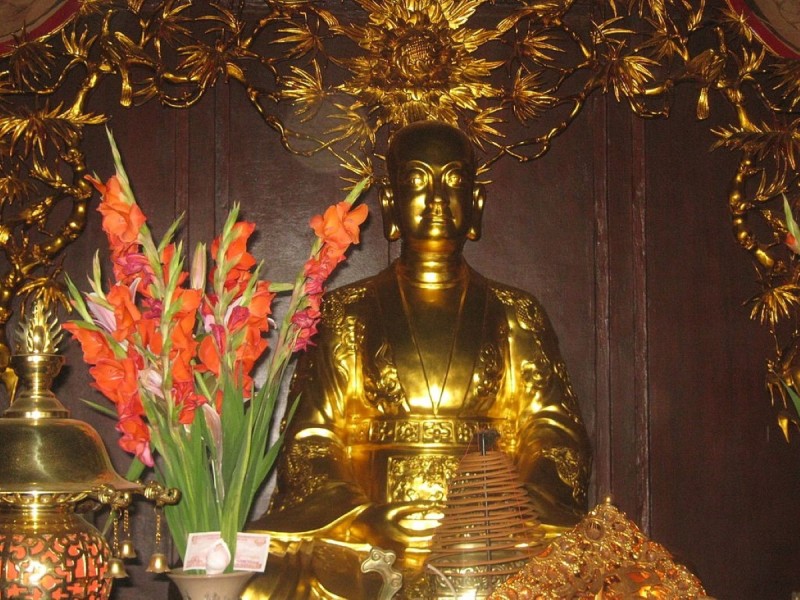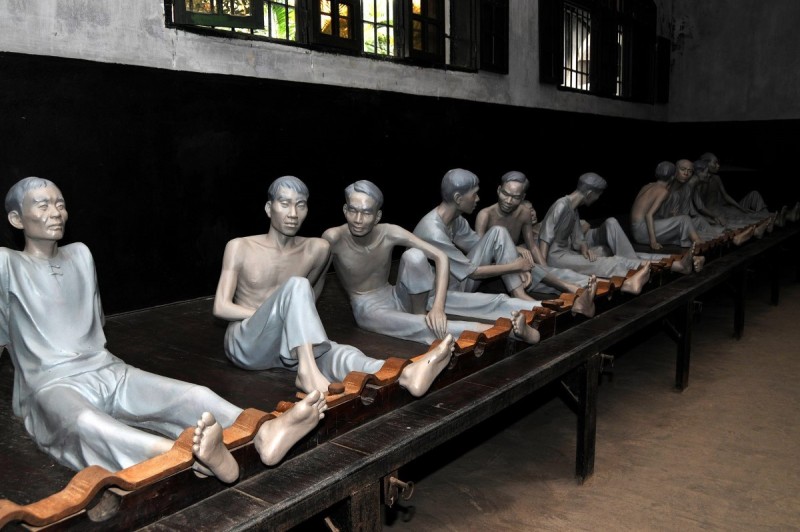Perfume Pagoda Hanoi: Complete Travel Guide & Things to Do
Perfume Pagoda Hanoi is a renowned spiritual complex offering scenic boat rides along the Yen River, ancient temples, and striking limestone caves. Visitors experience rich Buddhist traditions and vibrant festivals in a tranquil natural setting, making it a unique cultural and religious destination in northern Vietnam.
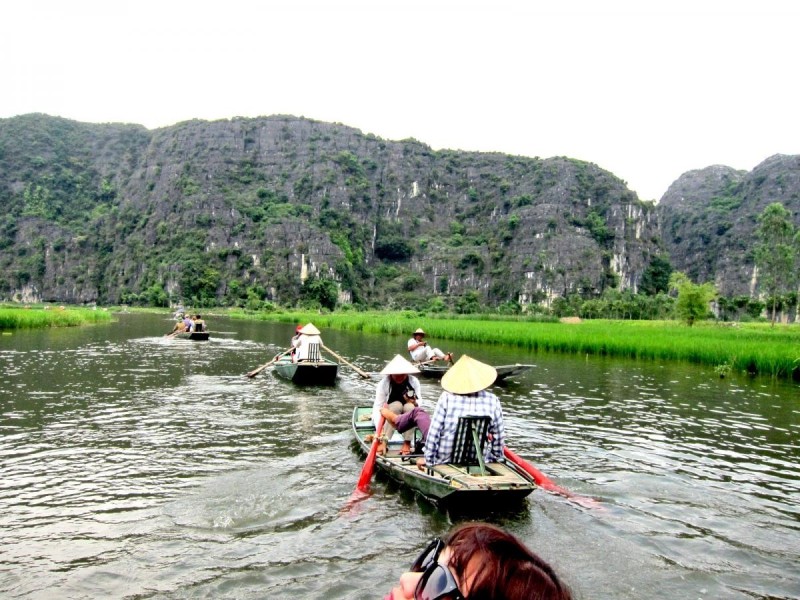
Introduction to Perfume Pagoda Hanoi
Perfume Pagoda Hanoi is a famous spiritual complex located in northern Vietnam, attracting thousands of visitors each year. This unique site blends natural beauty with deep cultural and religious significance. Known for its stunning karst landscape and revered Buddhist temples, the Perfume Pagoda offers travelers a serene retreat and a glimpse into Vietnam’s rich spiritual heritage. Whether you seek a peaceful pilgrimage or a scenic adventure, the Perfume Pagoda Hanoi is an unforgettable destination that combines nature, history, and faith.
Start your journey into the heart of Vietnam’s spiritual traditions and explore the wonders of the Perfume Pagoda Hanoi.
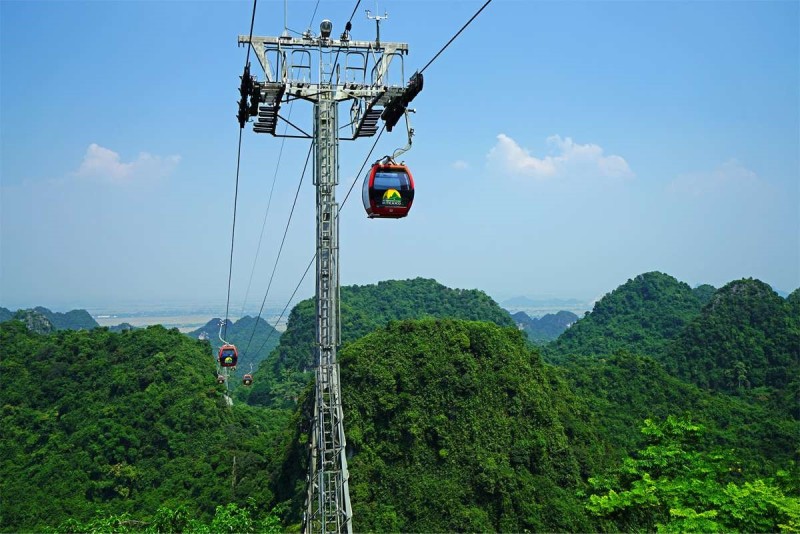
Overview of the Perfume Pagoda Complex
The Perfume Pagoda complex consists of numerous temples, caves, and shrines scattered across a vast area of limestone mountains. The most famous is the Huong Tich cave, renowned for its sacred status and striking natural formations. Visitors typically begin with a boat ride along the Yen River, followed by hikes or cable car trips to reach the upper temples. The complex’s layout offers a mix of tranquil spots for meditation and stunning vantage points to admire the karst landscape. Understanding the physical layout helps travelers plan their visit effectively.
Explore the rich history and layout of the Perfume Pagoda complex to make the most of your experience.
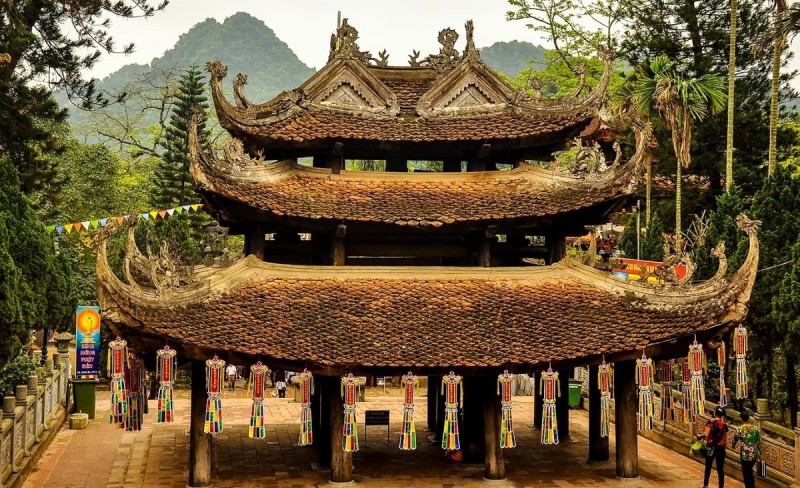
Significance and Popularity as a Pilgrimage Site
The Perfume Pagoda pilgrimage holds great spiritual importance in Vietnam. It is a vital destination for Buddhists who visit to offer prayers and participate in traditional festivals. The site’s religious festivals, often held in early spring, attract thousands who join in ceremonies, incense offerings, and ritual prayers. Beyond spirituality, the pilgrimage is a cultural event that celebrates Vietnam’s religious heritage. Its popularity also stems from the peaceful natural surroundings and the chance to connect deeply with local traditions.
Experience the profound spiritual and cultural significance of the Perfume Pagoda pilgrimage during your visit.
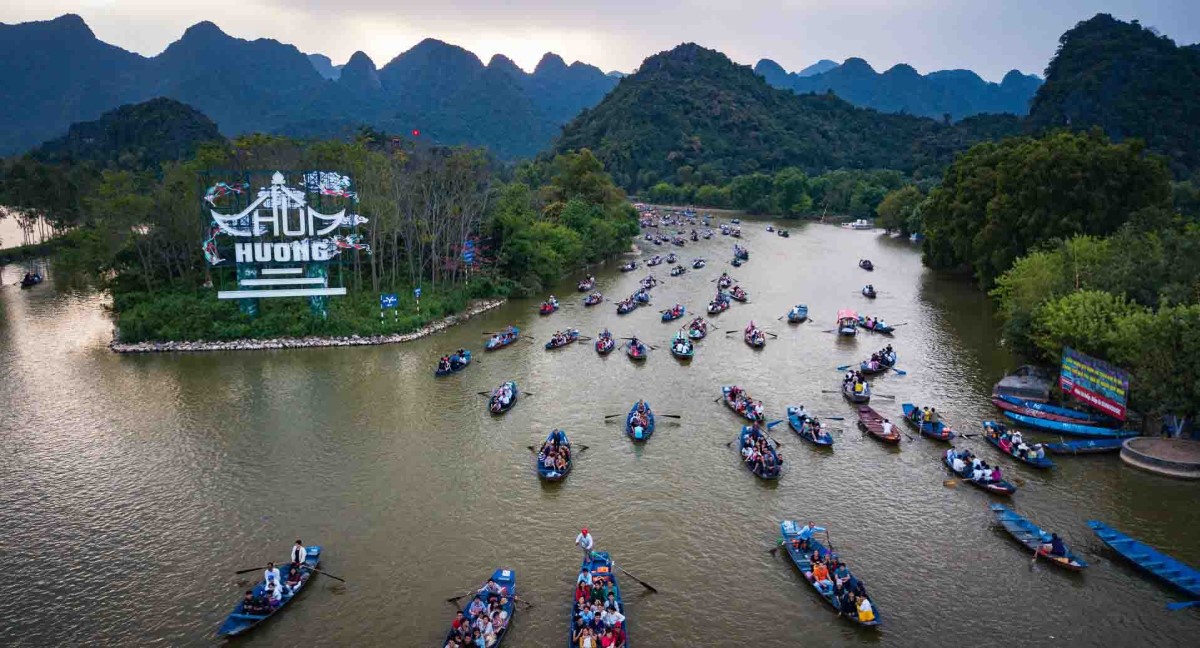
Unique Natural and Architectural Features
The Perfume Pagoda is set amid a breathtaking karst landscape, featuring dramatic limestone formations and serene waterways. The natural environment blends seamlessly with the religious architecture, from ancient pagodas to sacred caves. The Huong Tich cave stands out as a highlight, with stalactites and stalagmites shaped by centuries of natural forces and spiritual reverence. Visitors will also notice traditional wooden temples harmonizing with the rugged natural terrain. These features make the site an attraction for both adventure seekers and culture lovers.
Discover the natural features and architectural beauty that make the Perfume Pagoda a unique destination.

Historical and Cultural Background
Perfume Pagoda history reveals a rich tapestry woven through centuries of Vietnamese culture. This sacred site has evolved alongside powerful dynasties like the Lý Dynasty, Trần Dynasty, and Nguyễn Dynasty, shaping its spiritual and architectural significance. Understanding the origins and development of the Perfume Pagoda enhances your appreciation for its role as a cultural heritage landmark and pilgrimage destination in Vietnam.
Explore the deep history behind the Perfume Pagoda to connect with its timeless legacy.
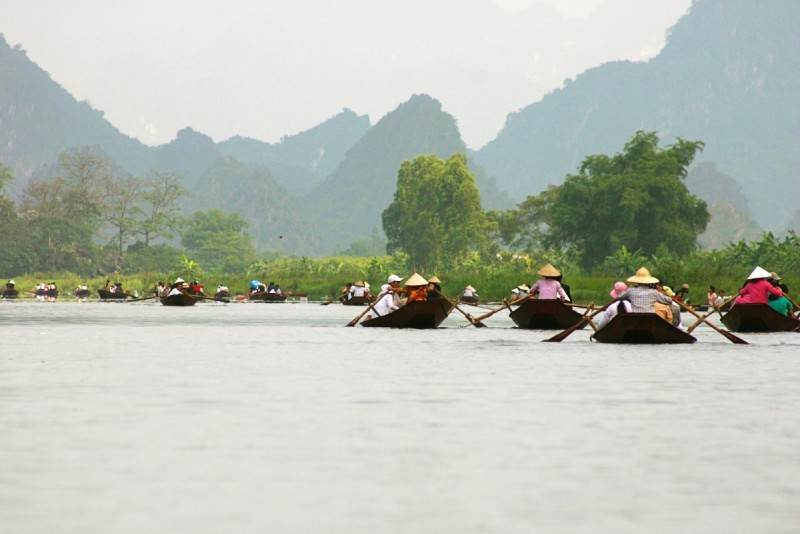
Origins and Historical Development
The history of Perfume Pagoda traces back to early records during the Lý Dynasty and Trần Dynasty periods, marking the beginnings of its religious prominence. Initially a modest collection of caves and shrines, the site gradually expanded through royal patronage and growing spiritual importance. The site's timeline reflects the broader cultural and religious shifts in Vietnamese history, emphasizing its enduring relevance.
Discover the fascinating origins of the Perfume Pagoda and how it has grown through Vietnam's dynastic eras.
Early References during Lý and Trần Dynasties
This section highlights the earliest documented history of the Perfume Pagoda during the Lý Dynasty and Trần Dynasty, focusing on its religious and cultural role in medieval Vietnam.
- Historical Documentation: Early mentions of the Perfume Pagoda appear in texts from the Lý Dynasty, showcasing its initial spiritual role.
- Royal Endorsement: The Trần Dynasty further elevated the site through imperial support and temple construction.
- Medieval Influence: These dynasties contributed to the site's integration within Vietnamese medieval history and royal dynasties’ religious policies.
These early developments laid the foundation for the Perfume Pagoda’s spiritual and cultural prominence.
Expansion in the Nguyễn Dynasty
During the Nguyễn Dynasty, the Perfume Pagoda experienced substantial growth and enhancement. This section explains the architectural developments and cultural significance added during this period.
- Architectural Growth: The Nguyễn Dynasty initiated the construction of new temples and improved access routes to the complex.
- Cultural Significance: This expansion elevated the Perfume Pagoda as a central pilgrimage site in Vietnamese cultural heritage.
- Increased Pilgrimage: Enhanced facilities encouraged more visitors and greater religious participation.
The Nguyễn Dynasty’s contributions highlight the evolving grandeur of the Perfume Pagoda.
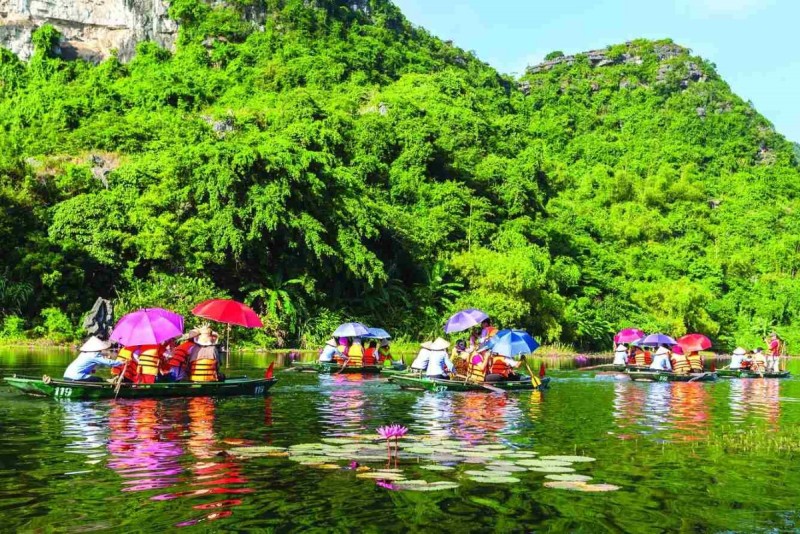
Buddhist Traditions and Religious Importance
The Buddhist traditions Perfume Pagoda embodies play a vital role in the spiritual life of many Vietnamese. This sacred site is a focal point for Buddhist pilgrimage in Vietnam, where devotees engage in rituals such as incense offerings, prayers, and meditation. These practices reflect centuries-old customs that continue to nurture faith and community. The Perfume Pagoda also hosts important religious festivals that attract pilgrims and tourists alike, offering a window into Vietnamese Buddhist customs.
Visitors can witness and participate in these meaningful traditions, gaining a deeper understanding of the site’s religious significance and spiritual atmosphere.
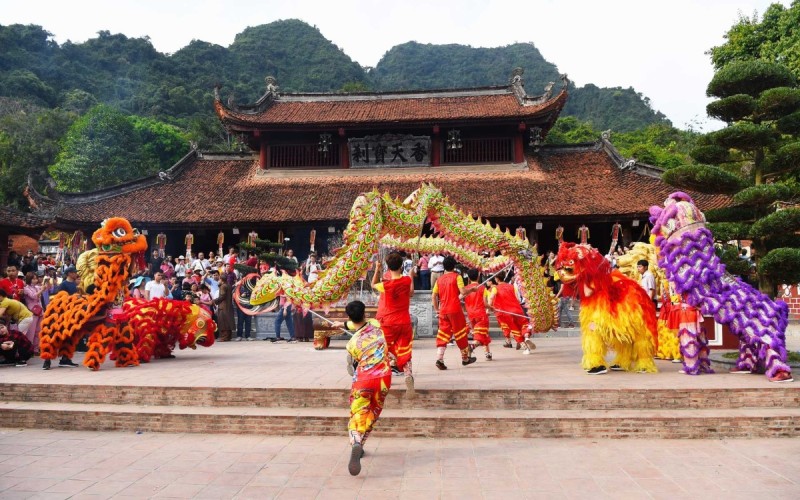
Cultural Heritage and Local Beliefs
The Perfume Pagoda cultural heritage extends beyond its physical temples to include rich local folklore and intangible traditions. Local communities cherish stories and legends passed down through generations, which connect the site to broader Vietnamese cultural identity. These beliefs often influence festival celebrations and daily rituals, enriching the spiritual tourism experience in northern Vietnam. Understanding these customs allows visitors to appreciate the profound connection between people, culture, and the sacred landscape of the Perfume Pagoda.
Immerse yourself in the vibrant cultural heritage and local beliefs that make the Perfume Pagoda a living, breathing symbol of Vietnamese spirituality.
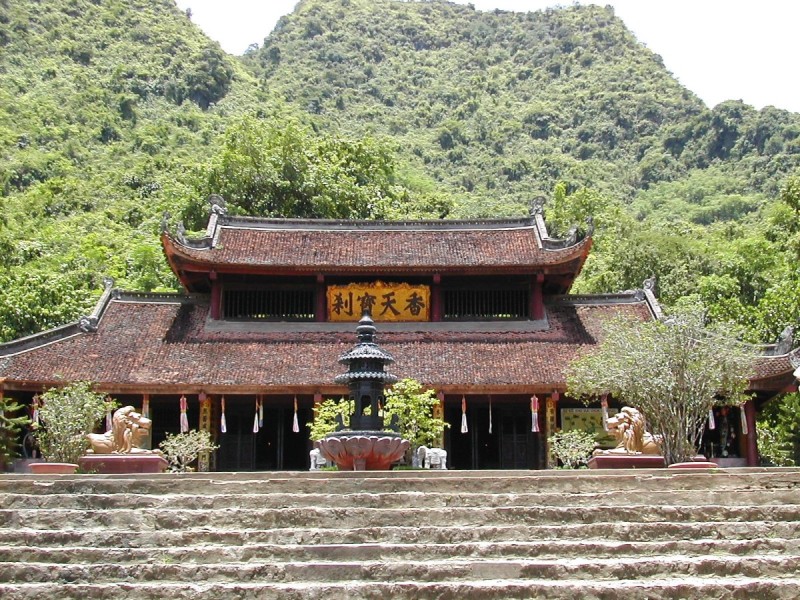
Planning Your Visit to Perfume Pagoda
Planning your visit to the Perfume Pagoda involves knowing the best time to go, how to get there, entry costs, and accessibility options. Whether you aim to join the vibrant festivals or prefer a quiet off-season trip, understanding these details helps you organize a smooth and enjoyable experience. From transportation via Ben Duoc Pier to cable car rides and on-foot hikes, various travel options cater to different preferences and needs.
Prepare your trip with confidence to the Perfume Pagoda, ensuring a memorable and well-planned visit.
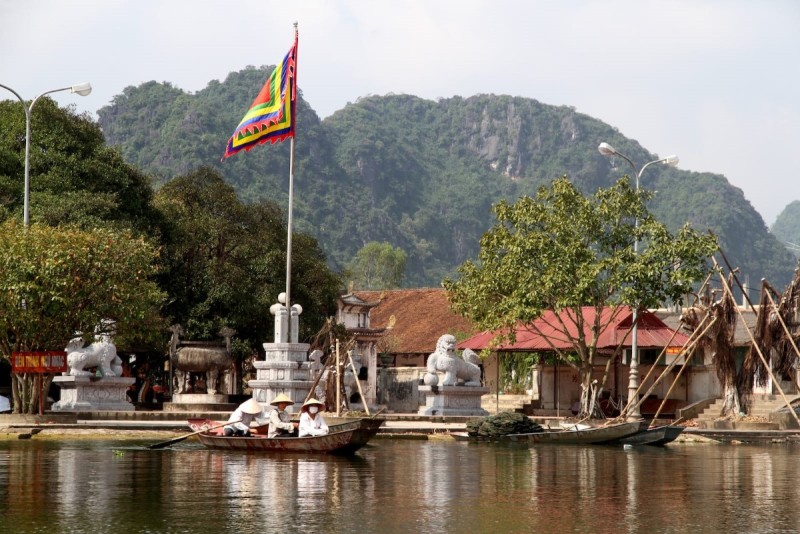
Best Time to Visit
The best time to visit Perfume Pagoda is largely influenced by seasonal weather and festival schedules. The peak pilgrimage season runs during the Perfume Pagoda festival period, usually from January to March (Lunar New Year period). This time offers rich cultural ceremonies but comes with larger crowds. Off-peak months provide a quieter, more serene environment, perfect for those seeking peaceful exploration.
Consider these factors to choose the ideal season for your Perfume Pagoda visit.
Perfume Pagoda Festival Period and Highlights
The annual festival at the Perfume Pagoda is a highlight of Vietnam’s spiritual calendar, celebrated mainly between January and March. It features traditional Buddhist rituals, prayer ceremonies, and cultural performances that draw thousands of pilgrims and tourists. Key events include incense offerings, dragon dances, and processions within the temple complex.
- Festival Timing: Typically from the 6th day of the first lunar month, lasting several weeks.
- Main Ceremonies: Incense offerings, prayers, and ritual blessings.
- Cultural Highlights: Folk music, traditional games, and local performances.
Attending during the festival immerses you in authentic Vietnamese religious culture.
Off-Peak Season Advantages
Visiting the Perfume Pagoda outside the festival period has its perks. Travelers seeking solitude and natural beauty will appreciate the peaceful surroundings without the festival crowds. Off-season visits also mean easier access to temples and more relaxed travel conditions.
- Quieter Experience: Fewer visitors, ideal for meditation and photography.
- Lower Costs: Accommodation and transport may be more affordable.
- Flexible Itineraries: More time to explore hidden spots in the complex.
Consider the off-peak season for a tranquil and reflective journey to the Perfume Pagoda.
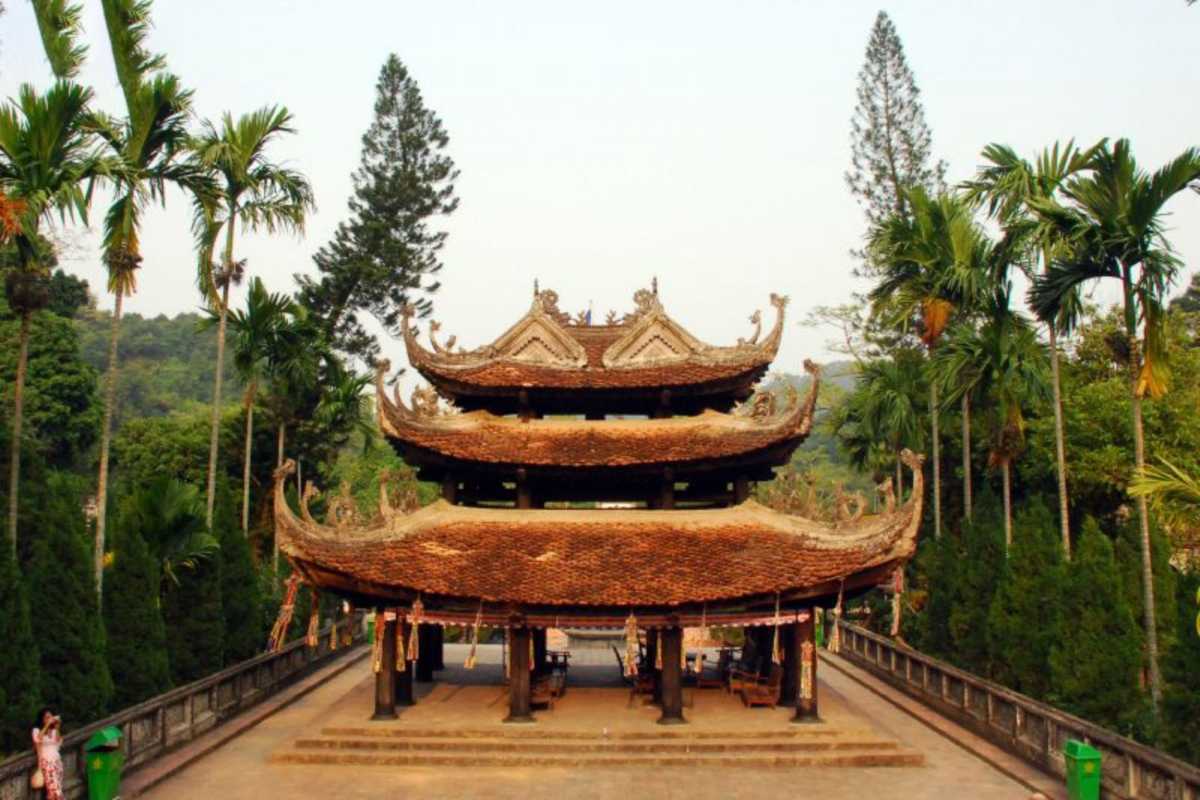
How to Get There
Knowing how to get to Perfume Pagoda from Hanoi is essential for planning your trip. Several transportation options are available, each with its advantages depending on your budget, comfort preference, and schedule. Whether you choose public transport, private transfers, or self-drive, understanding these choices will help you select the best route for a smooth journey to this spiritual site.
Choose the transportation option that fits your travel style and enjoy your visit to the Perfume Pagoda.
Transportation Options from Hanoi (Public Transport, Private Transfer, Self-Drive)
Travelers can reach the Perfume Pagoda using various modes of transport from Hanoi, each offering distinct pros and cons:
- Public Bus: Economical and accessible, buses run regularly from Hanoi to the nearby Ben Duoc Pier area, though they may take longer and involve transfers.
- Minivan/Private Transfer: More comfortable and direct, private transfers or minivans provide door-to-door service with shorter travel times.
- Self-Drive: Renting a motorbike or car offers flexibility and adventure but requires familiarity with local roads and traffic conditions.
Estimated travel times range from 2 to 3 hours depending on the chosen mode and traffic.
Assess these options carefully to find the best fit for your Perfume Pagoda trip.
Key Access Points (Ben Duoc Pier, Cable Car Station)
Two main access points are crucial for reaching the Perfume Pagoda complex:
- Ben Duoc Pier: This boat dock is where most visitors begin their river journey to the pagoda. Boats depart frequently here for the scenic ride along the Yen River.
- Cable Car Station: Located near the base of the mountains, the cable car station offers a convenient and picturesque alternative to hiking, transporting visitors up to the upper temples.
Familiarity with these locations helps streamline your visit and ensures a smooth transition between transport modes.
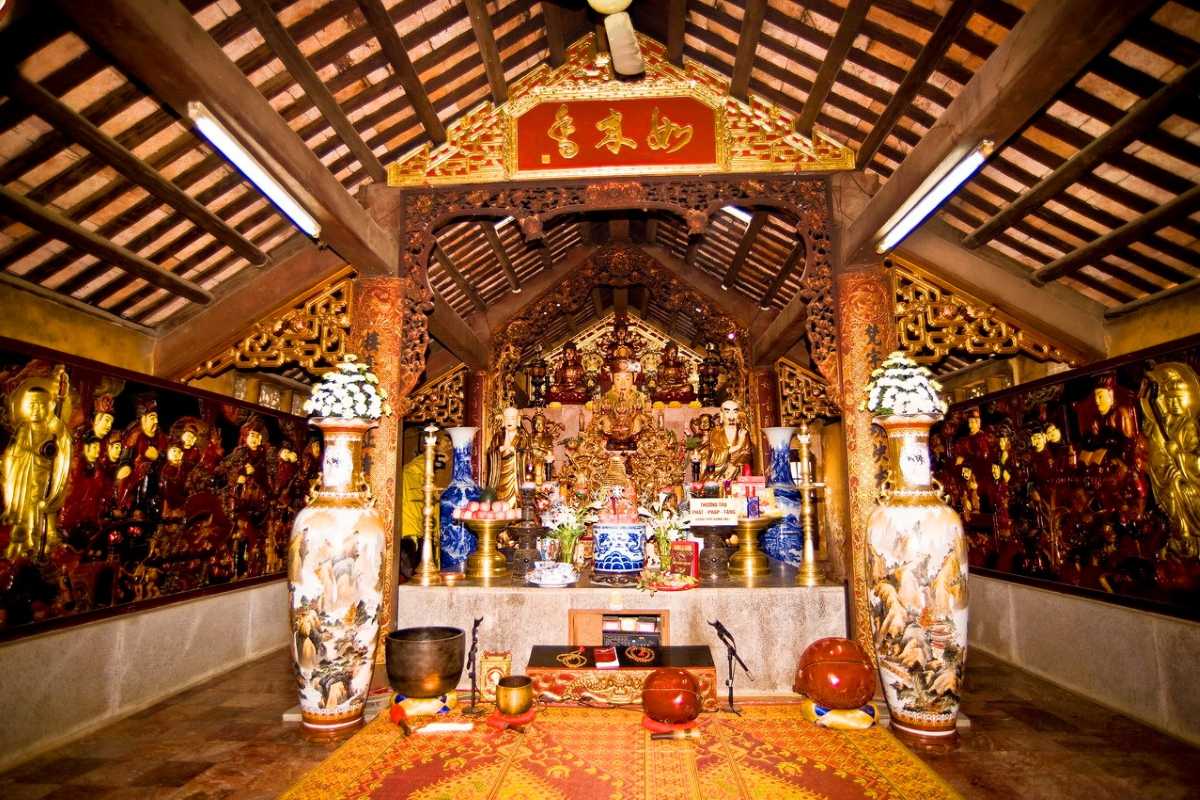
Entry Fees and Ticket Information
Understanding the Perfume Pagoda entry fees helps visitors plan their budget and avoid surprises. This section outlines all typical costs, including boat rides, cable car fares, and any additional donations or fees you might encounter during your visit. Clear knowledge of these expenses ensures a smooth and well-prepared trip.
Review the ticket prices and fees to manage your Perfume Pagoda visit expenses accurately.
Boat Ride Prices
Boat rides along the Yen River are an essential part of reaching the Perfume Pagoda complex. Typical prices vary based on the boat type and number of passengers.
- Standard Boat: Approximately 80,000 to 100,000 VND per person for the round trip.
- Larger Boats: May offer group discounts or private rides at higher rates.
- Additional Charges: Some boats may charge extra for luggage or off-peak services.
Budgeting for the boat ride is crucial as it forms a significant part of the transport experience.
Cable Car Fares
The cable car offers a convenient and scenic route up to the temples. Ticket costs are fixed but vary depending on the ticket type.
- One-Way Ticket: Around 90,000 VND per person.
- Round-Trip Ticket: Approximately 140,000 VND per person.
- Discounts: Available for children, students, and seniors.
Including the cable car fares in your budget allows for a comfortable and time-saving visit.
Additional Donations or Fees
Visitors may be asked to contribute voluntary donations or pay small fees for specific services.
- Temple Donations: Optional contributions to support temple upkeep.
- Guide Fees: If hiring local guides for a deeper experience.
- Parking Fees: Applicable if using private transport.
Being aware of these possible extra costs ensures you are financially prepared for the full visit.
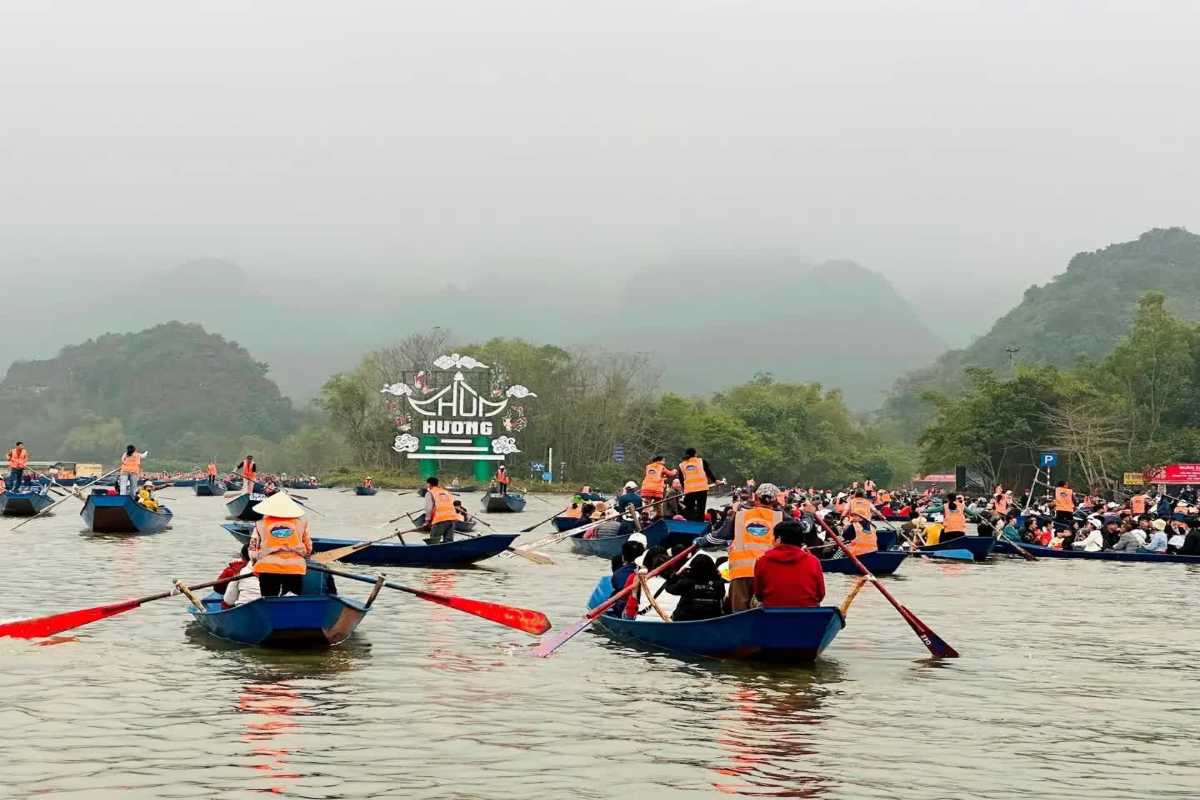
Accessibility and Visitor Facilities
Understanding Perfume Pagoda accessibility and available visitor facilities is crucial for planning a comfortable visit. The site offers various amenities designed to accommodate different mobility needs and provide essential services to all travelers. Knowing what to expect helps ensure that your trip is both enjoyable and convenient.
Explore the accessibility options and facilities that support a smooth visit to the Perfume Pagoda.
Suitability for Different Age Groups and Mobility Levels
The Perfume Pagoda caters to a wide range of visitors, including elderly travelers, children, and those with mobility challenges. While some areas require hiking and uneven terrain navigation, alternative routes and assistance are available.
- Paths and Trails: Some steep and uneven sections may be challenging for those with limited mobility.
- Cable Car Option: Provides easier access to upper temples, ideal for seniors and families.
- Assistance Services: Local helpers may be available to aid visitors needing support.
- Family-Friendly Areas: Designated rest spots and safe zones for children.
Assess your needs and plan accordingly to enjoy the site comfortably.
Amenities at the Site (Restrooms, Food, Guides)
Several visitor amenities at the Perfume Pagoda ensure a pleasant experience during your visit.
- Restrooms: Available near major entry points and temple areas, maintained to reasonable standards.
- Food Services: Small eateries and vendors offer local snacks and meals near key spots.
- Guided Tours: Professional guides provide historical and cultural insights, enhancing your visit.
- Seating Areas: Benches and resting spots scattered throughout the complex.
Familiarize yourself with these facilities to make the most of your time at the Perfume Pagoda.
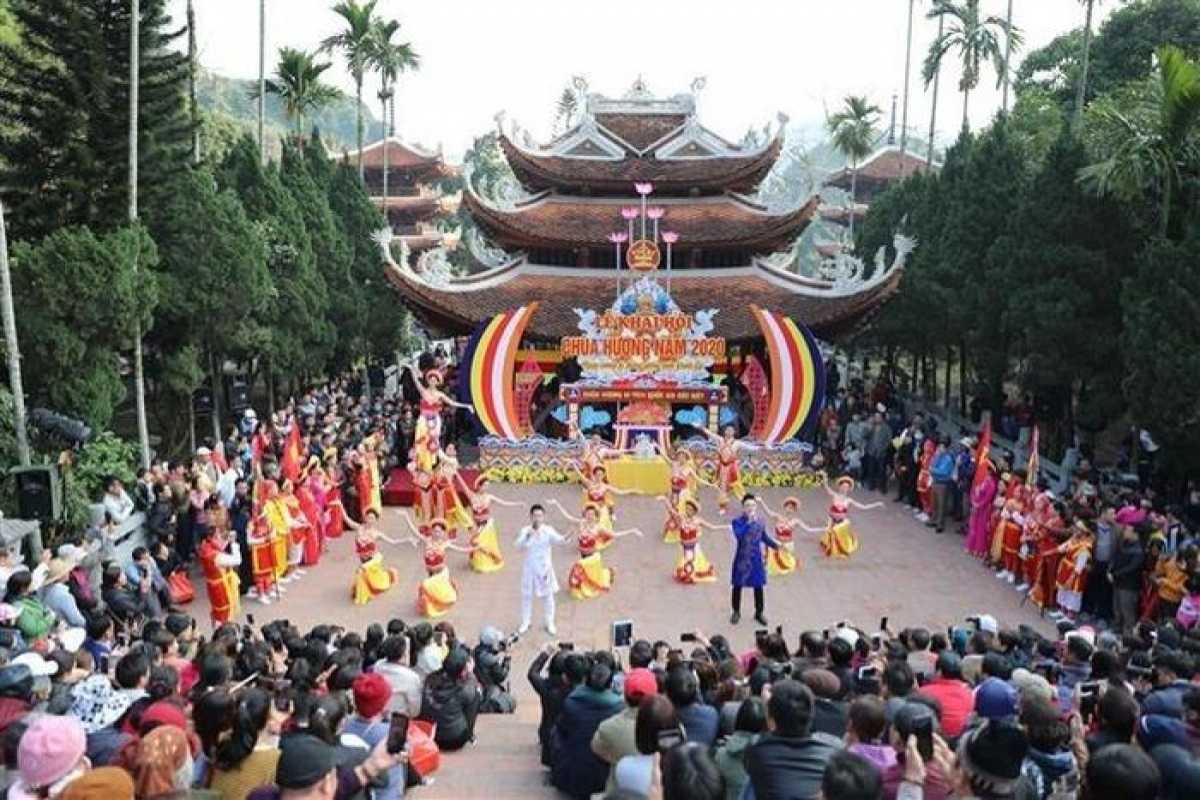
Attractions and Activities at Perfume Pagoda
The Perfume Pagoda offers a rich blend of natural beauty, cultural heritage, and spiritual significance. Visitors can enjoy a variety of experiences, from serene boat journeys along the Yen River to exploring ancient temples and participating in meaningful spiritual activities. The stunning karst limestone landscape provides breathtaking scenic views, making every step a chance to connect with Vietnam’s rich cultural and religious traditions.
Discover the many attractions and activities that make the Perfume Pagoda a must-visit destination.
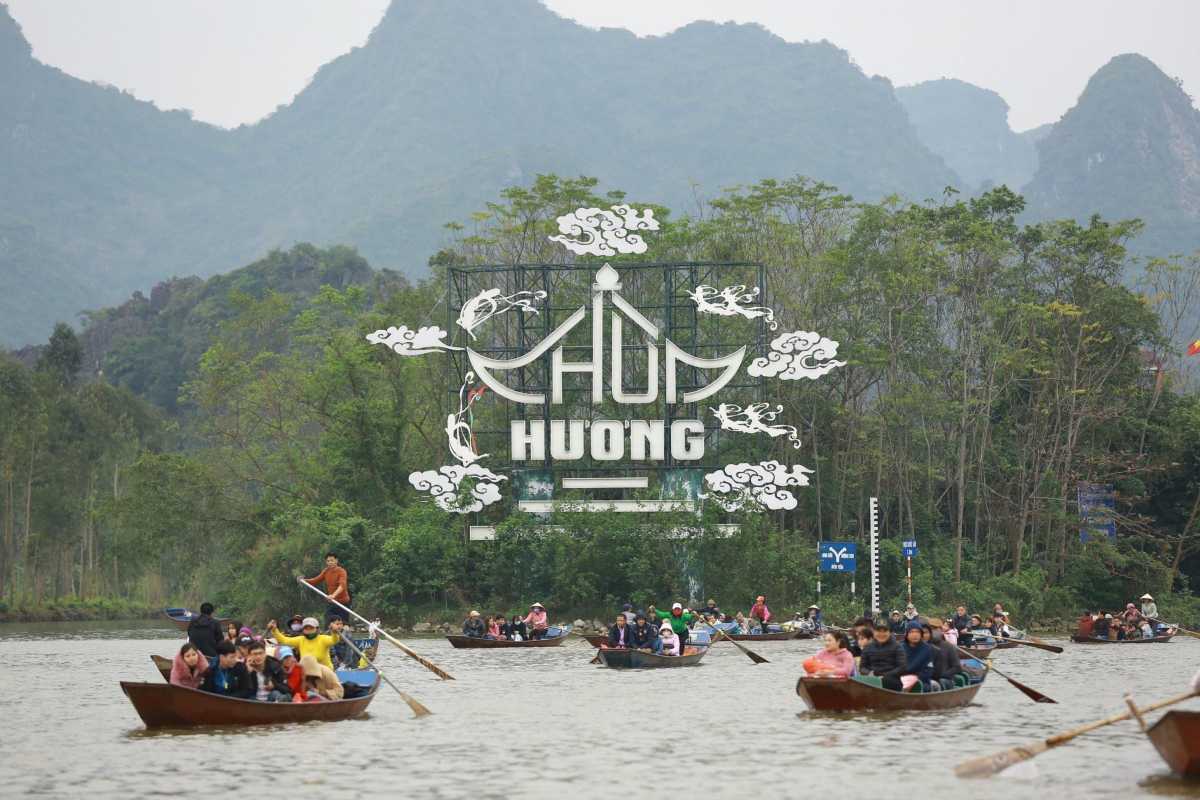
Boat Journey along Yen River
The iconic boat journey Yen River is a highlight for visitors, offering peaceful cruising through a stunning karst limestone landscape. This scenic ride introduces travelers to the natural beauty surrounding the Perfume Pagoda and sets the tone for the spiritual journey ahead.
Enjoy the tranquil waterway and picturesque views as you approach the sacred complex.
Scenic Views and Photo Opportunities
Along the boat ride, several scenic spots stand out for their natural charm and photo potential:
- Dramatic limestone formations: Towering karst cliffs rise from the river, creating a striking backdrop.
- Verdant riverbanks: Lush greenery lines the shores, home to diverse flora and fauna.
- Wildlife sightings: Keep an eye out for birds and aquatic life that inhabit the river ecosystem.
- Quiet coves and caves: Hidden pockets of tranquility perfect for contemplation and photography.
These views provide countless opportunities to capture the essence of the Perfume Pagoda surroundings.
Duration and Experience Tips
Understanding the typical boat ride duration and how to enhance your experience can improve your visit:
- Average Duration: Approximately 20 to 30 minutes one way, depending on boat type and river conditions.
- Seating Comfort: Choose boats with shaded seating to protect against sun and rain.
- Timing: Early morning rides offer cooler temperatures and calmer waters.
- Photography Tips: Have your camera ready for changing light and scenic stops along the way.
Planning your boat journey carefully ensures a comfortable and memorable start to your Perfume Pagoda visit.

Exploring Temples and Caves
Exploring temples Perfume Pagoda reveals a rich collection of spiritual and architectural treasures within the complex. Visitors will encounter historic pagodas and sacred caves that reflect centuries of Vietnamese Buddhist devotion and artistry. These sites offer a profound glimpse into religious architecture Vietnam and the enduring traditions of Buddhist pilgrimage sites.
Discover the key temples and caves that define the spiritual heart of the Perfume Pagoda.
Huong Tich Cave – Features and Significance
The Huong Tich Cave is the centerpiece of the Perfume Pagoda complex, revered for its spiritual and natural significance. Nestled within a karst limestone landscape, the cave features stunning stalactites and stalagmites, which local legend believes to be sacred manifestations. Pilgrims visit this cave to perform important rituals and seek blessings during their pilgrimage.
- Sacred Formations: Natural limestone shapes regarded as symbols of good fortune.
- Pilgrimage Rituals: Key ceremonies include incense offerings and prayers inside the cave.
- Atmospheric Ambience: Dimly lit interiors evoke a mystical, contemplative mood.
Visiting Huong Tich Cave offers a deeply spiritual and sensory experience within the Perfume Pagoda.
Thien Tru Pagoda and Other Temples
The Thien Tru Pagoda and surrounding temples enrich the spiritual landscape of the Perfume Pagoda. These structures exemplify traditional Vietnamese religious architecture, blending harmoniously with the natural environment. They serve as places for worship, meditation, and cultural festivals.
- Architectural Style: Classic wooden pagoda designs with ornate carvings and tiled roofs.
- Spiritual Functions: Hosting daily prayers, rituals, and seasonal celebrations.
- Additional Sites: Numerous smaller temples dot the complex, each with unique historical and religious importance.
These temples complement the cave pilgrimage, offering varied spiritual experiences.
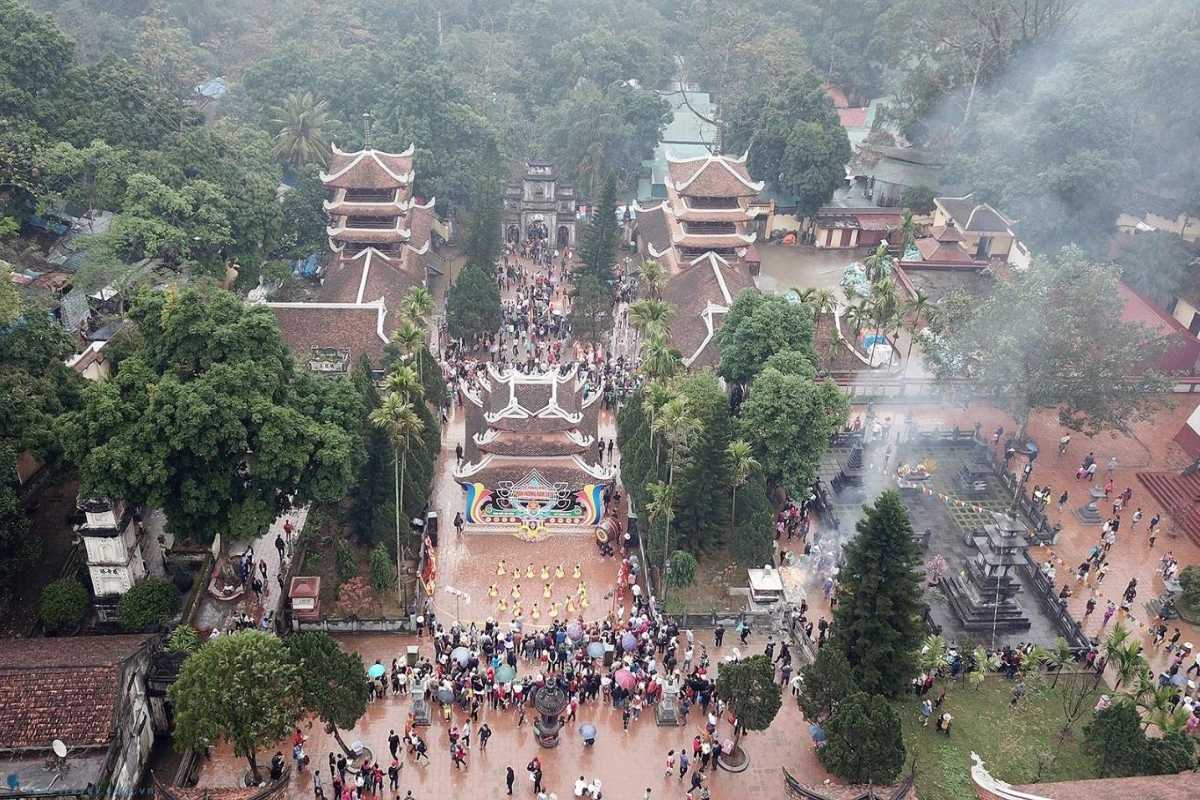
Hiking and Cable Car Options
Visitors to the Perfume Pagoda can choose between hiking and taking the cable car to ascend the complex. Deciding between these options depends on your preference for physical activity versus convenience. Both offer unique ways to experience the stunning natural environment and cultural sites of the area.
Consider the benefits of hiking versus the cable car to plan your perfect visit to the Perfume Pagoda.
Hiking Trails: Difficulty and Points of Interest
The hiking trails at the Perfume Pagoda vary in difficulty and feature several points of interest along the way:
- Trail Difficulty: Moderate to challenging, with steep and uneven paths suitable for visitors with reasonable fitness levels.
- Scenic Views: Multiple lookout points offer panoramic vistas of the surrounding karst limestone landscape.
- Rest Stops: Small shelters and resting areas available for breaks during the hike.
- Wildlife: Opportunities to observe local flora and fauna native to the area.
Being prepared for the trail conditions ensures a safe and rewarding hiking experience.
Cable Car Experience and Views
The cable car at Perfume Pagoda provides a convenient and scenic alternative to hiking. The ride offers breathtaking views of the lush landscape and limestone mountains, making it popular among visitors seeking comfort without missing natural beauty.
- Comfortable Ride: Smooth and accessible for all ages and fitness levels.
- Scenic Highlights: Sweeping views of the Yen River, forested mountains, and temple rooftops.
- Time-Saving: Significantly reduces travel time compared to hiking.
- Photo Opportunities: Large windows perfect for capturing the stunning surroundings.
Choosing the cable car enhances accessibility and allows more time to explore the temples.
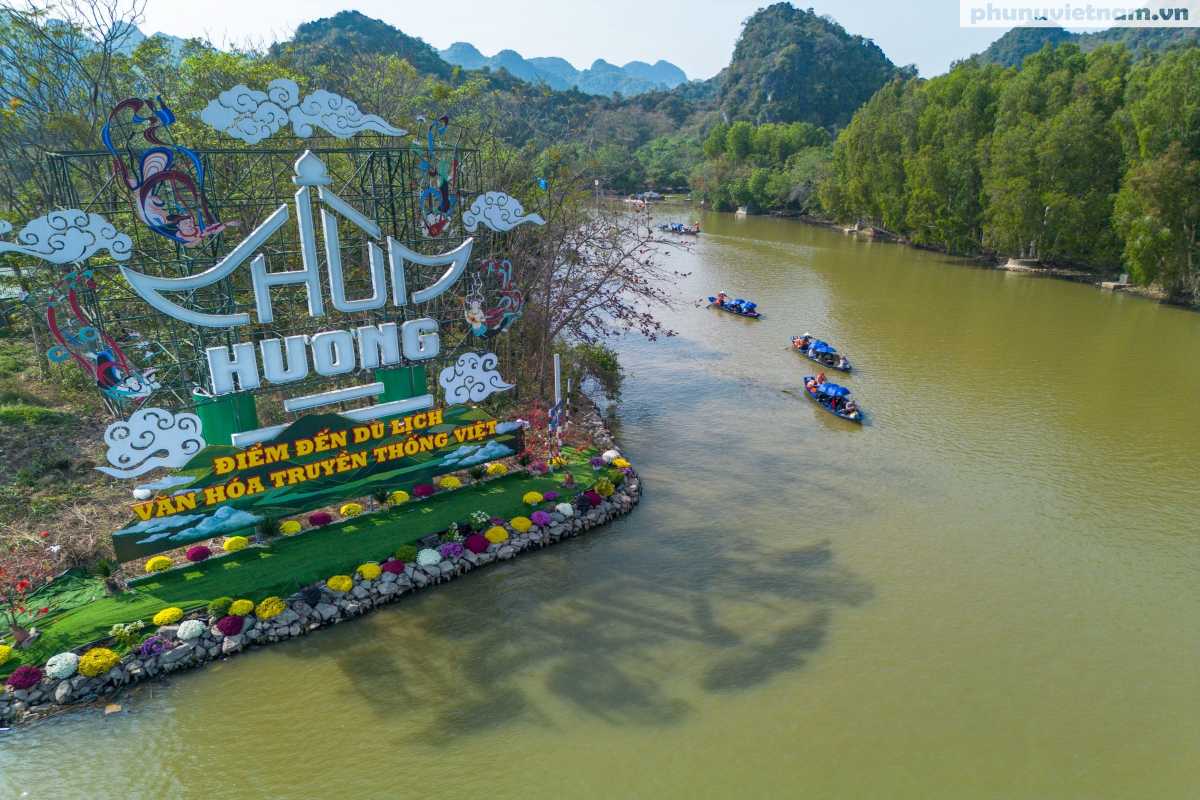
Participating in Spiritual and Cultural Activities
Engaging in spiritual activities Perfume Pagoda offers visitors an authentic way to connect with Vietnamese Buddhist traditions. From incense offerings to prayer rituals, the site invites you to participate respectfully in ceremonies that have been practiced for centuries. These experiences deepen your understanding of the cultural and religious importance of the Perfume Pagoda.
Explore these meaningful activities to enrich your visit with genuine spiritual engagement.
Incense Offering and Prayers
The incense offering Perfume Pagoda is a central ritual where pilgrims present incense sticks as symbols of respect and devotion. Visitors are encouraged to follow certain guidelines to participate appropriately:
- Timing: Incense offerings are most common during festival periods and special ceremonies.
- Placement: Offer incense at designated altars and shrines throughout the complex.
- Attire: Dress modestly and behave quietly to show reverence.
- Prayers: Many pilgrims recite prayers or meditate during the ritual.
Respectful participation in incense offerings enhances the spiritual atmosphere for all visitors.
Observing or Joining Festival Ceremonies
The Perfume Pagoda festival ceremonies showcase vibrant cultural traditions including music, dance, and ritual processions. Visitors can observe or join these events to experience northern Vietnam’s rich spiritual heritage firsthand.
- Main Events: Incense burning, dragon dances, and lantern processions.
- Visitor Participation: Opportunities to join communal prayers and traditional games.
- Seasonal Timing: Most festivals occur between January and March (Lunar New Year period).
- Cultural Insights: Local performers and monks explain ceremony meanings.
Joining festival ceremonies offers a memorable window into the living culture of the Perfume Pagoda.
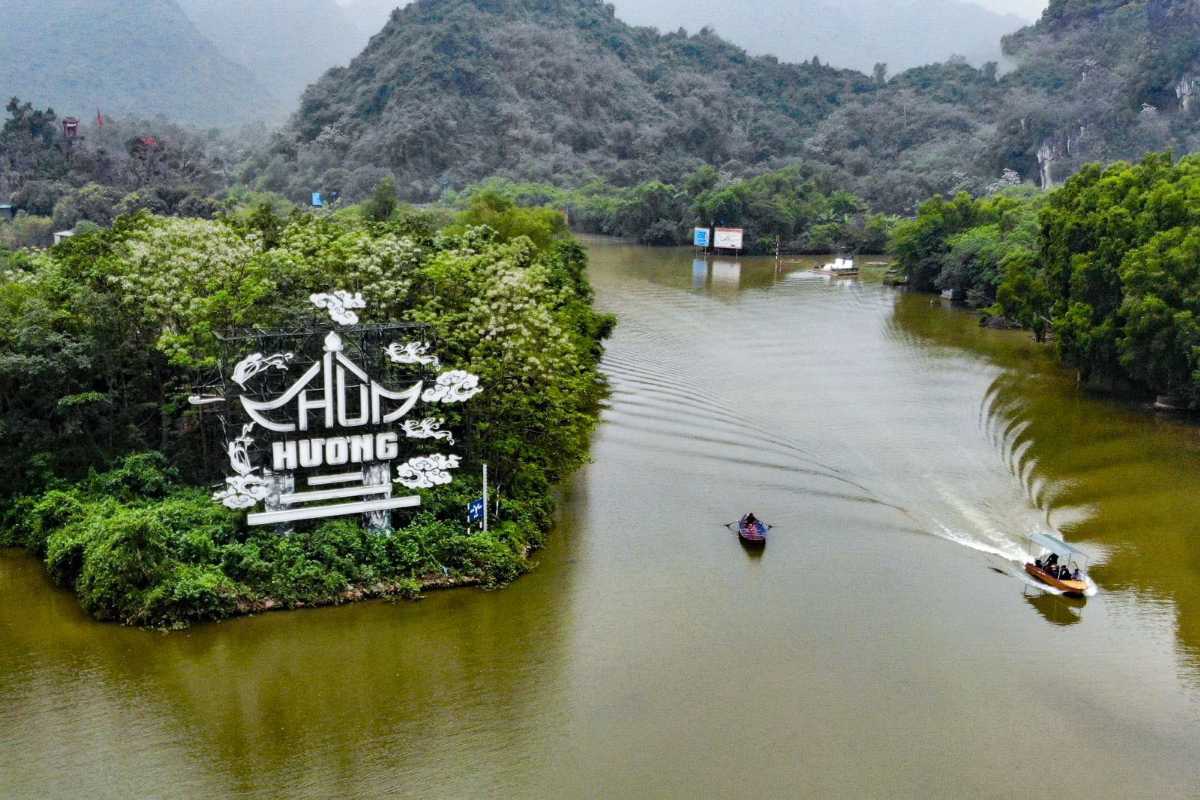
Nature and Photography
Nature photography Perfume Pagoda offers visitors a chance to capture the stunning karst limestone landscape and vibrant biodiversity. The site’s natural beauty provides endless opportunities for photographers and nature lovers to explore and preserve moments of Vietnam’s natural heritage. Knowing the best spots and what flora and fauna to expect will help you make the most of your visit.
Prepare your camera and senses for a memorable photographic journey through the Perfume Pagoda.
Local Flora and Fauna
The Perfume Pagoda area is rich in local flora and fauna, offering a diverse natural environment that enhances the visitor experience.
- Native Plant Species: Includes various orchids, ferns, and tropical trees that thrive in the limestone karst habitat.
- Wildlife: Birds, butterflies, and small mammals commonly spotted along the trails and riverbanks.
- Seasonal Variations: Different species and blooms can be observed depending on the time of year.
- Conservation Efforts: Ongoing projects help protect this fragile ecosystem as part of Vietnam’s natural heritage.
Observing the local flora and fauna adds a rewarding dimension to your visit.
Best Spots for Photography
To capture the best images at the Perfume Pagoda, consider these picturesque locations:
- Boat ride along the Yen River: Offers stunning views of limestone formations and tranquil waters.
- Entrance to Huong Tich Cave: Dramatic natural light and cavern structures.
- Summit viewpoints near temples: Panoramic vistas of surrounding mountains and forests.
- Forest trails and riversides: Abundant opportunities for close-up shots of plants and wildlife.
Target these spots to maximize your photography experience at the Perfume Pagoda.
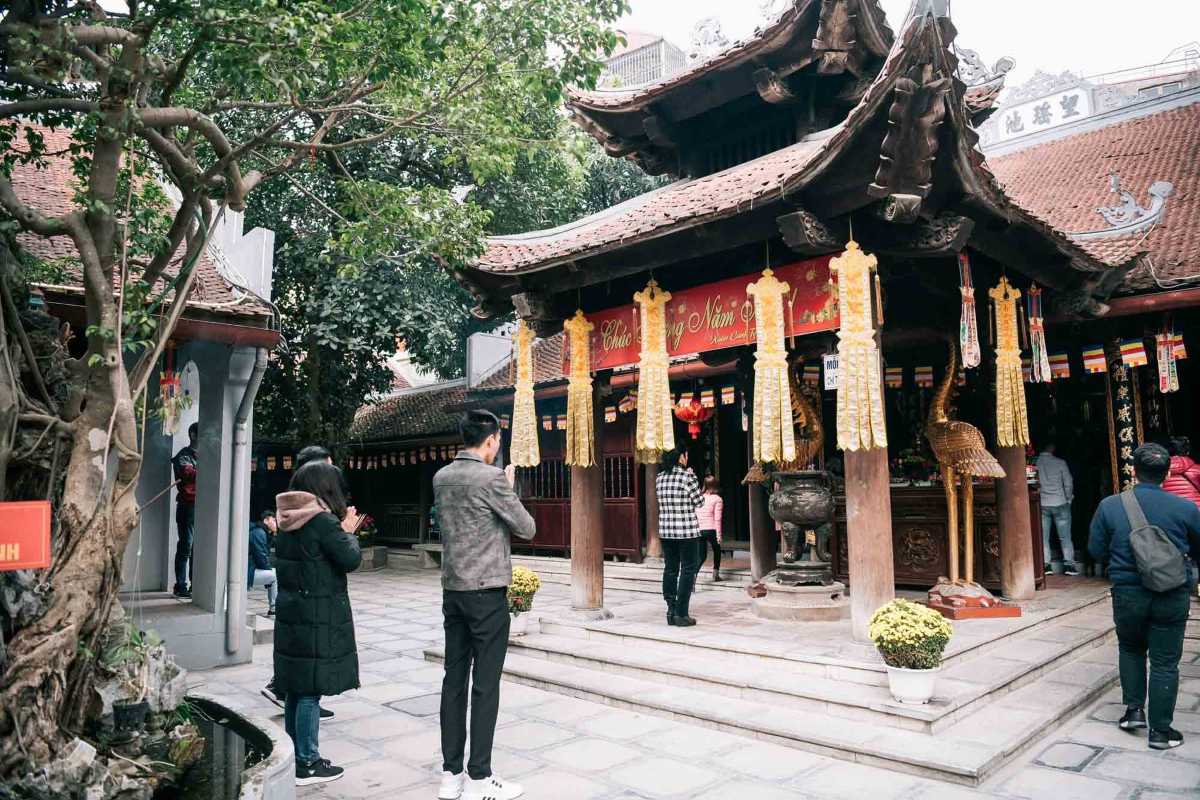
Nearby Attractions and Complementary Experiences
Nearby attractions Perfume Pagoda offer travelers enriching opportunities to explore beyond the main site. From surrounding caves and smaller temples to visits to local villages and the beautiful Van Long Nature Reserve, there are many ways to deepen your cultural and natural experience. These complementary sights and activities invite you to enjoy the diverse landscapes and rural life of northern Vietnam.
Expand your adventure by discovering the nearby gems around the Perfume Pagoda.
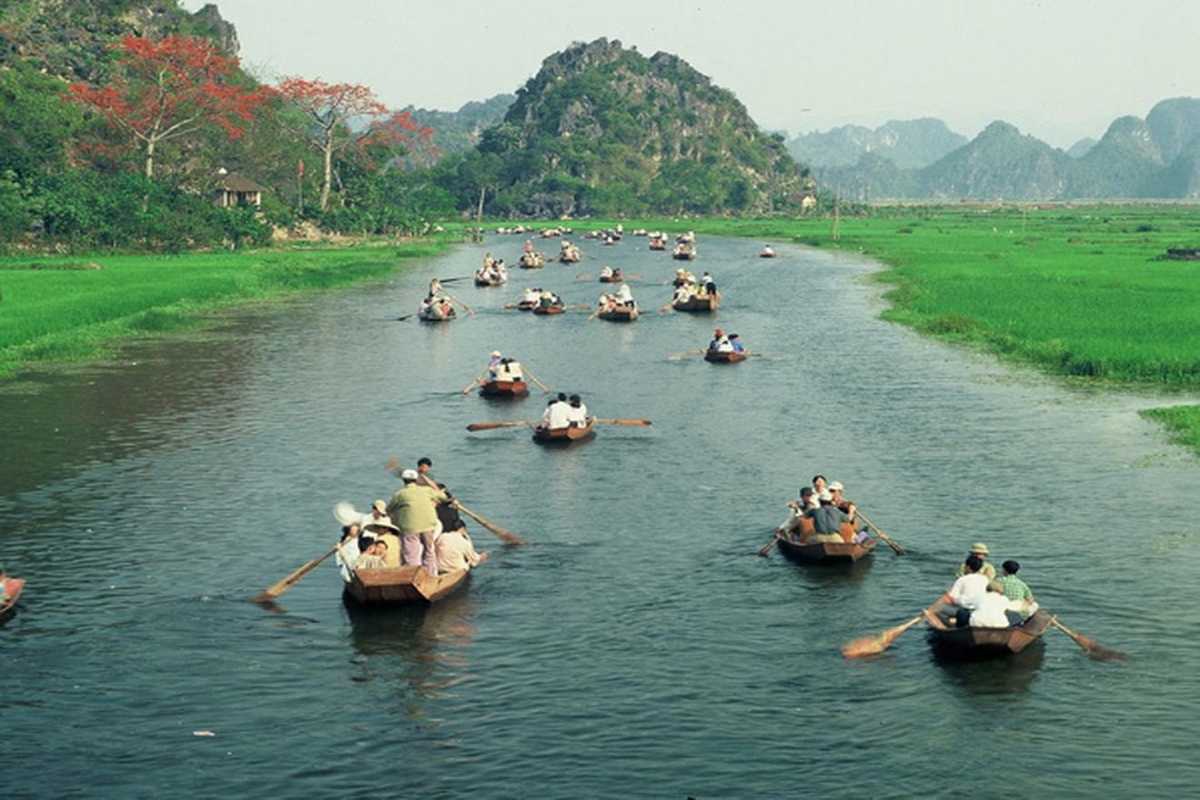
Surrounding Caves and Smaller Temples
The area around the Perfume Pagoda features several lesser-known caves and smaller temples that provide peaceful escapes and spiritual insight. Exploring these hidden sites offers a more intimate connection with the region’s religious heritage and natural limestone formations.
- Huong Khe Cave: A tranquil spot with spiritual significance and beautiful stalactites.
- Hang Luon Cave: Known for its quiet atmosphere and historical importance.
- Various small pagodas: Scattered through the hills, each with unique religious and cultural stories.
These surrounding caves and temples are perfect for visitors seeking off-the-beaten-path experiences.
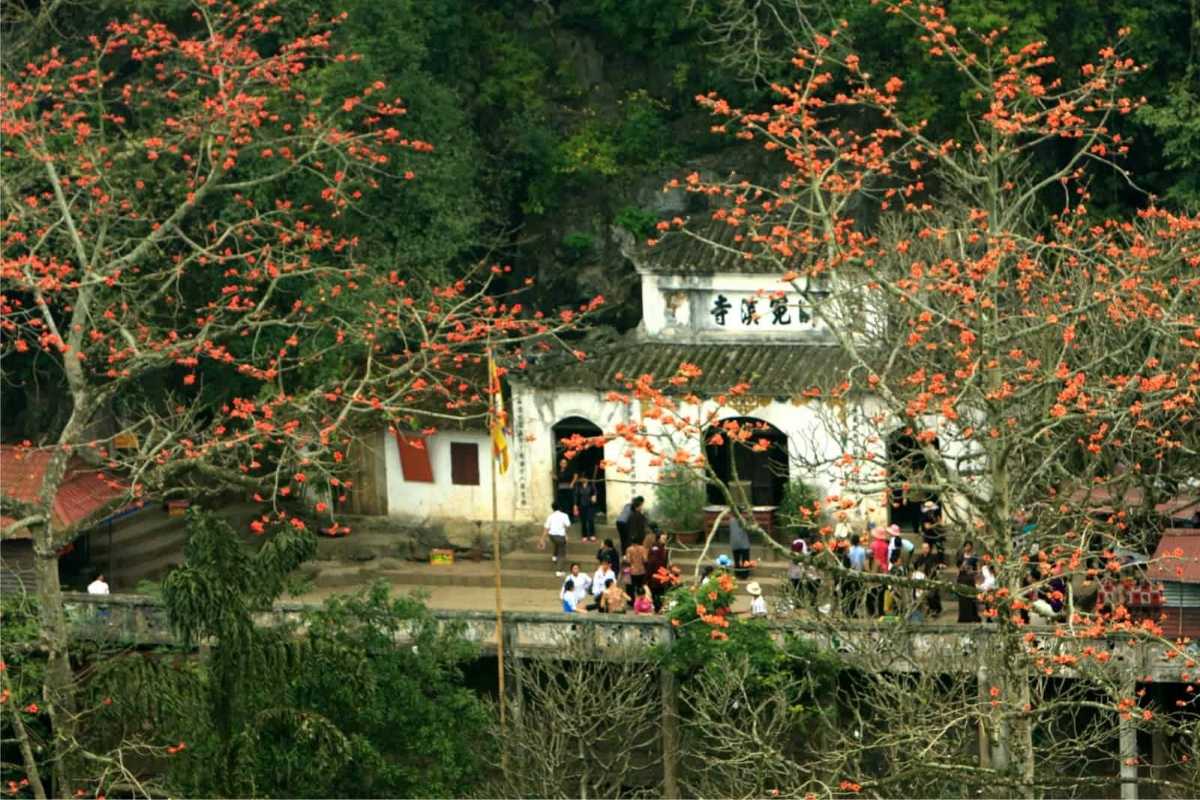
Local Villages and Rural Life Experiences
Visiting local villages near the Perfume Pagoda introduces travelers to authentic Vietnamese rural life. These communities maintain traditional crafts, agricultural practices, and cultural festivals, providing a warm and engaging cultural immersion.
Experience daily life in these villages through:
- Traditional farming and fishing activities.
- Handicraft workshops and local markets.
- Participation in cultural events and home-cooked meals.
Such visits enrich your understanding of Vietnamese traditional culture and rural tourism.
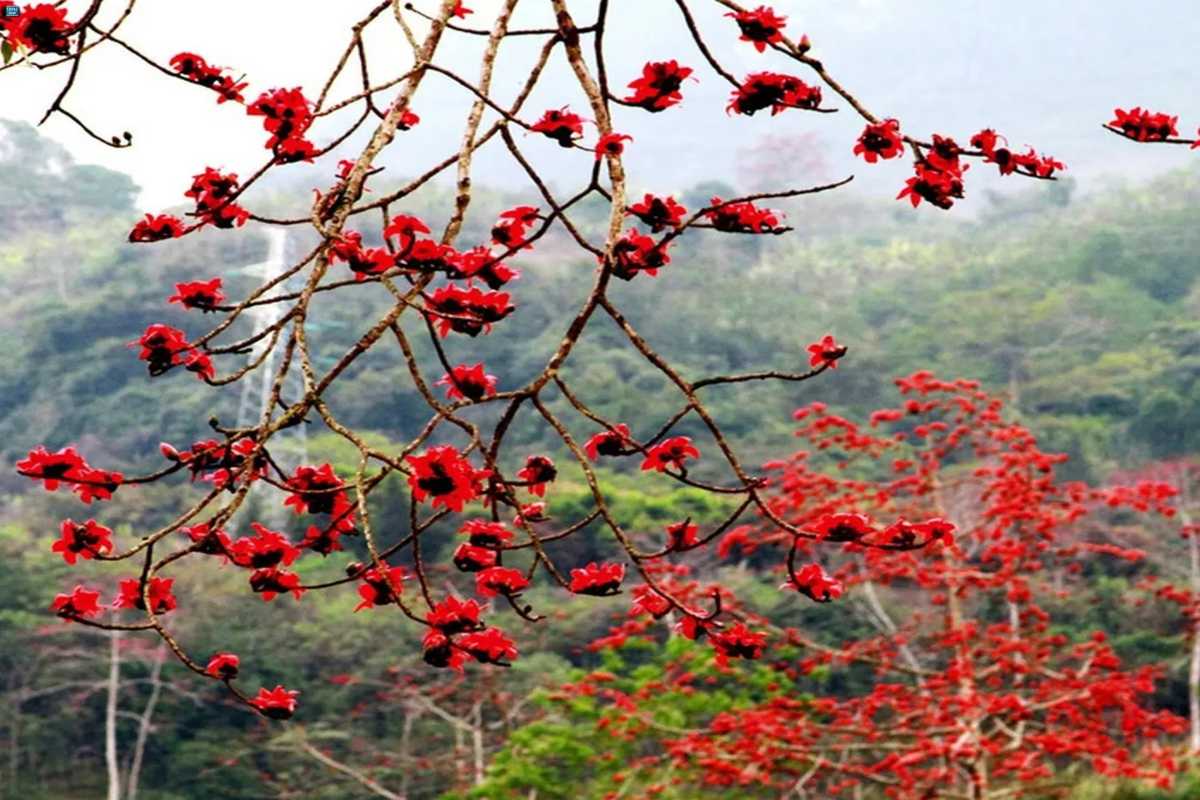
Van Long Nature Reserve Day Trips
The Van Long Nature Reserve offers an exceptional natural retreat close to the Perfume Pagoda. Known for its scenic wetlands and rich biodiversity, it is ideal for wildlife watching and peaceful boat tours.
Highlights of a day trip include:
- Exploring tranquil wetlands by small boat.
- Spotting rare bird species and other wildlife.
- Walking trails surrounded by limestone karst formations.
A visit to Van Long Nature Reserve complements your cultural exploration with a refreshing nature experience.
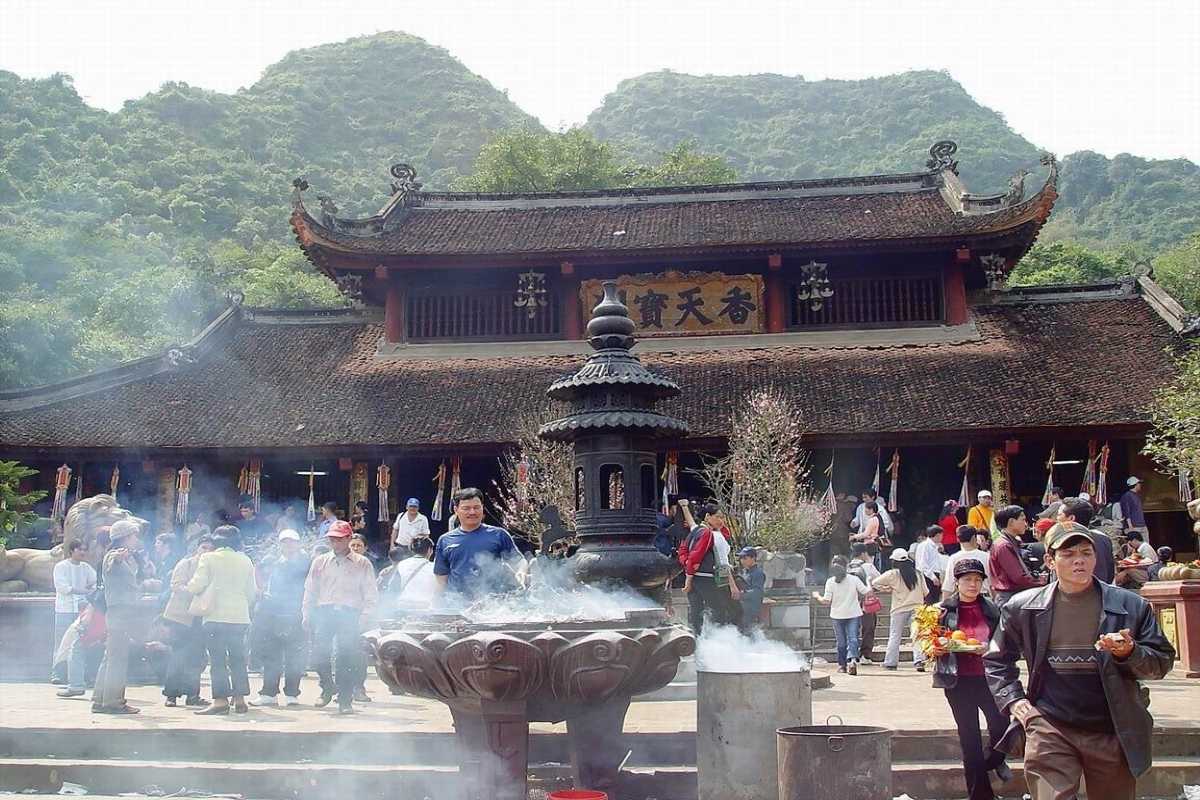
Other Nearby Scenic Spots and Hiking Trails
For those looking to extend their outdoor adventures, numerous scenic spots and hiking trails near the Perfume Pagoda offer breathtaking views and invigorating treks.
Popular options include:
- Ngu Nhac Mountain trail: A moderate hike with panoramic vistas.
- Khe Cave path: Scenic route leading to hidden natural caves.
- Surrounding limestone hills: Ideal for nature walks and photography.
These trails provide an excellent way to immerse yourself in northern Vietnam’s nature tourism.

Perfume Pagoda Festival Details
The Perfume Pagoda Festival is an annual event of great spiritual and cultural importance, attracting thousands of pilgrims and tourists. This festival combines religious rituals, traditional games, and vibrant cultural performances, offering visitors a unique insight into Vietnamese Buddhist traditions. Knowing the festival dates, key ceremonies, and how to navigate crowds helps you prepare for an enriching and smooth experience.
Experience the deep cultural heritage and lively atmosphere of the Perfume Pagoda Festival on your visit.
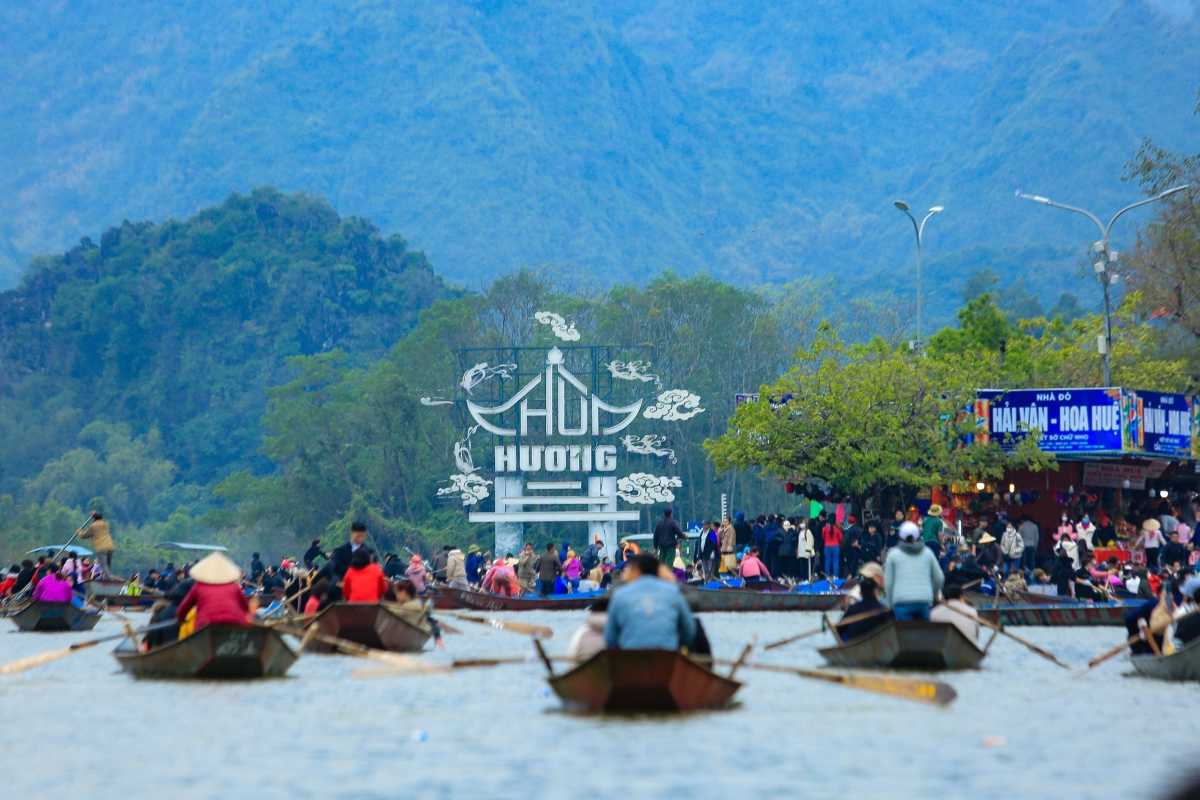
Festival Dates and Calendar
The Perfume Pagoda festival dates typically fall between January and March, aligning with the Lunar New Year celebrations. The festival spans several weeks, beginning on the 6th day of the first lunar month and continuing until the 15th day.
- Start Date: 6th day of the first lunar month.
- Duration: Approximately 2 weeks.
- Peak Days: The first three days see the highest number of pilgrims.
- Timing is based on the Lunar calendar, so exact Gregorian dates vary yearly.
Planning your visit according to this calendar ensures you witness the festival’s most important moments.
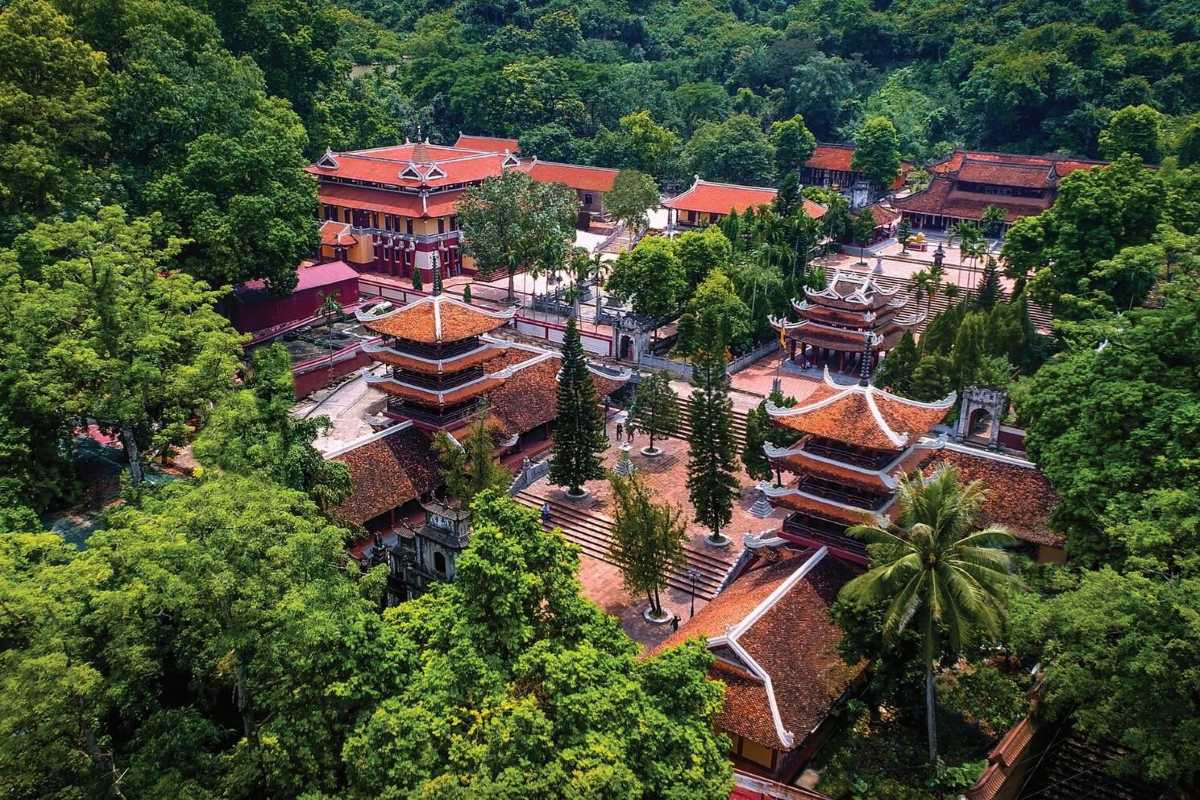
Main Rituals and Ceremonies
The festival’s rituals are deeply spiritual and central to the Perfume Pagoda’s religious significance.
- Incense Offering: Pilgrims light incense sticks to honor Buddha and seek blessings.
- Prayer Ceremonies: Monks conduct daily prayers and chanting sessions.
- Water Procession: Traditional boat processions along the Yen River mark the festival.
- Blessing Rituals: Visitors receive sacred blessings at temple altars.
These ceremonies provide visitors a chance to engage respectfully with the site’s spiritual traditions.
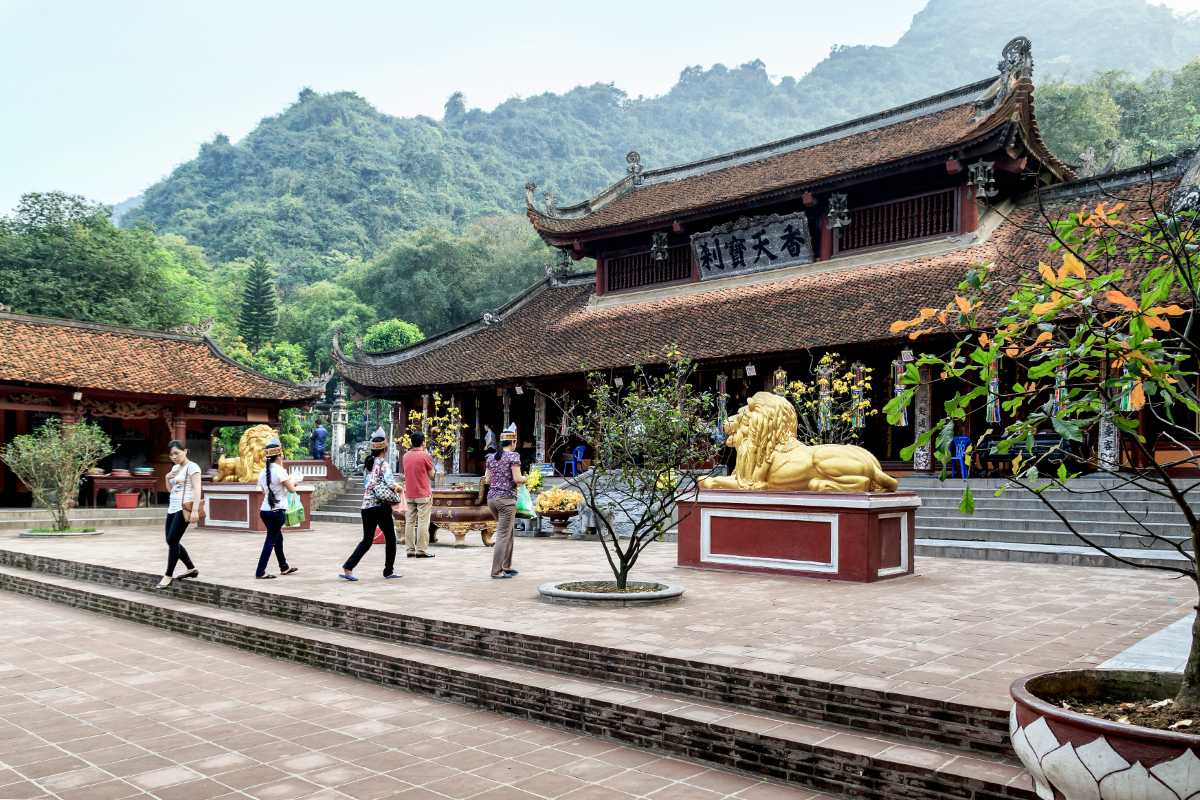
Traditional Games and Cultural Performances
Beyond religious activities, the festival features vibrant cultural events that celebrate northern Vietnamese heritage.
- Folk Games: Traditional games such as tug-of-war, bamboo pole dancing, and lion dances.
- Music and Dance: Performances of local folk music and ritual dances.
- Street Performances: Actors and artists reenact historical and mythical stories.
- Local Food Stalls: Vendors offer regional delicacies enhancing the festive mood.
These cultural highlights enrich the festive atmosphere and entertain visitors of all ages.
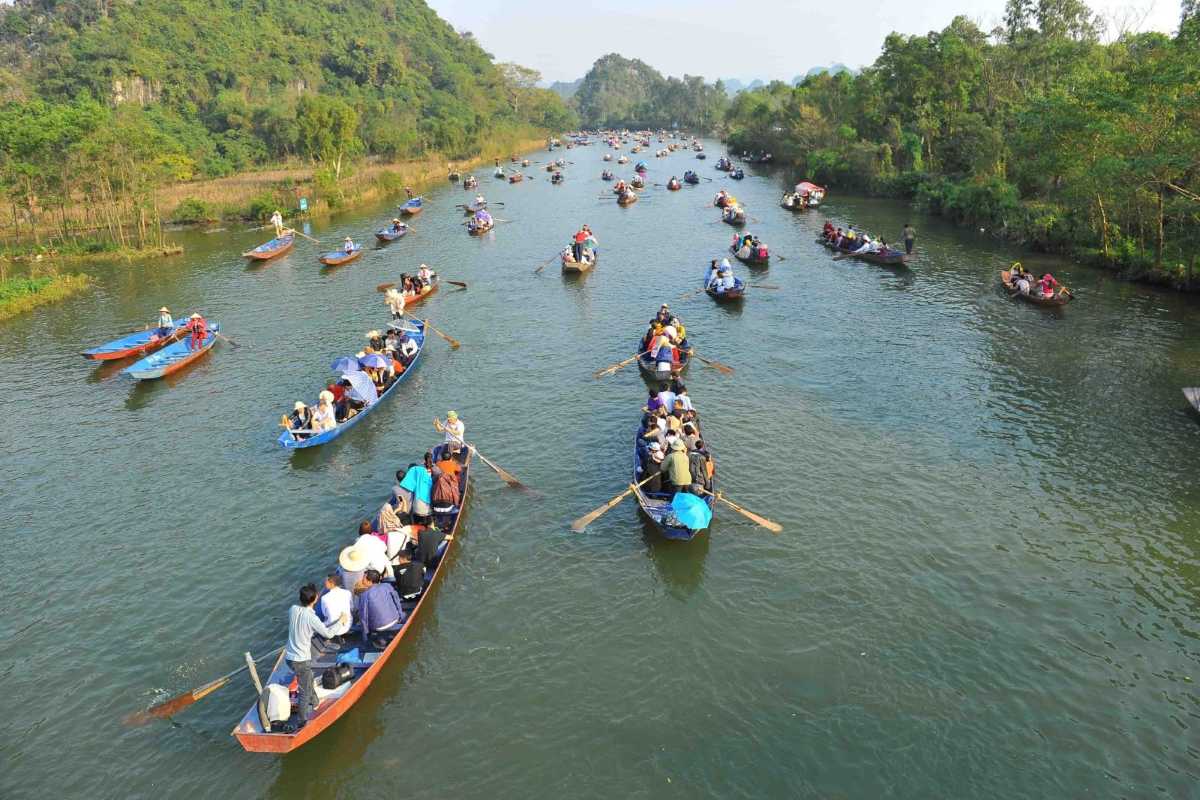
Tips for Navigating Festival Crowds
Managing the large crowds during the festival helps maximize your experience and safety.
- Visit Early: Arrive early in the day to avoid peak crowd times.
- Plan Routes: Familiarize yourself with entry and exit points, including Ben Duoc Pier and cable car stations.
- Stay Hydrated: Bring water and wear comfortable footwear for long walks.
- Use Guides: Consider hiring local guides for crowd navigation and cultural insights.
Following these tips will help you enjoy the Perfume Pagoda Festival comfortably and safely.
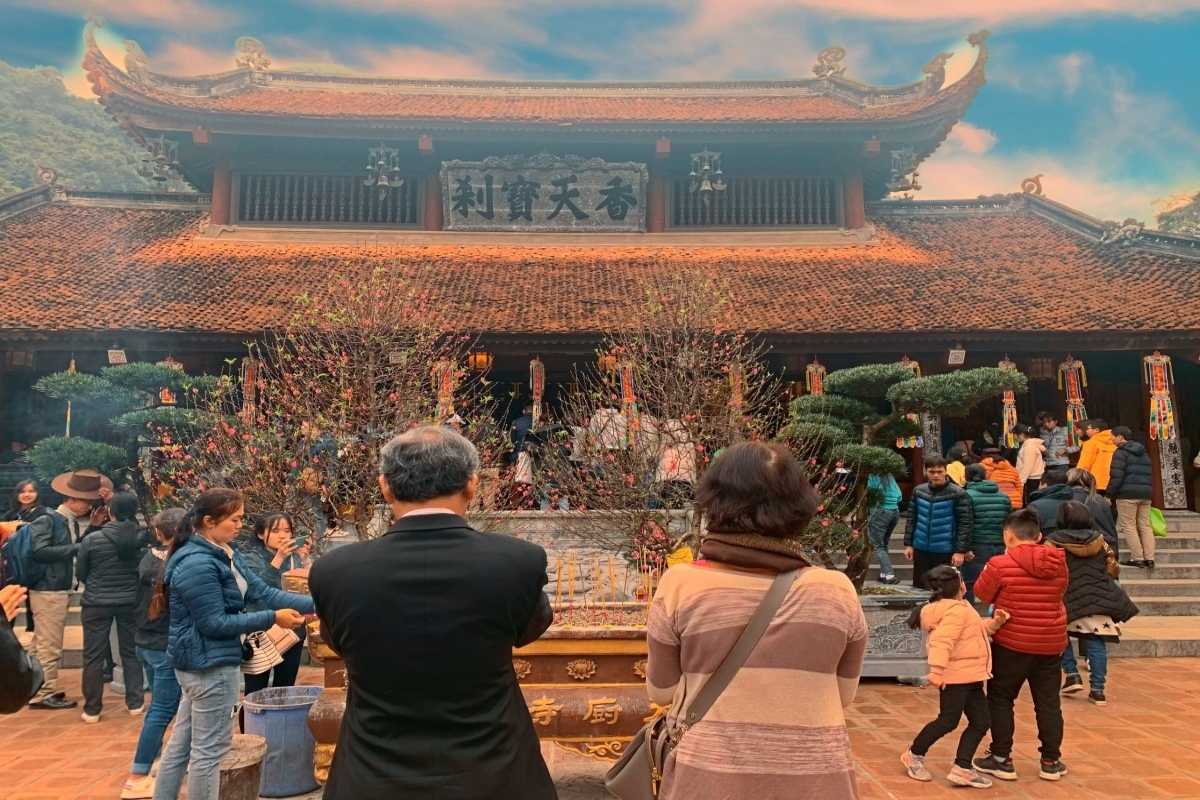
Conservation and Sustainability Efforts
The Perfume Pagoda conservation initiatives aim to protect both the natural environment and the cultural heritage of this sacred site. Visitors play an important role in supporting these efforts by practicing responsible tourism and respecting preservation guidelines. Understanding these programs encourages stewardship and helps ensure the Perfume Pagoda remains vibrant for future generations.
Learn how environmental protection and cultural preservation work hand in hand at the Perfume Pagoda.

Environmental Protection Initiatives
Several programs focus on preserving the fragile ecosystem surrounding the Perfume Pagoda:
- Waste Management: Regular clean-up campaigns and waste disposal systems to keep the area pristine.
- Habitat Protection: Conservation of native plants and wildlife within the karst limestone landscape.
- Visitor Education: Awareness programs informing tourists about environmental impacts.
- Collaboration: Partnerships with local authorities and NGOs to promote ecotourism and sustainability.
These initiatives support long-term environmental health in the Perfume Pagoda region.

Cultural Heritage Preservation Programs
Maintaining the spiritual and historical integrity of the Perfume Pagoda involves active cultural preservation:
- Restoration Projects: Ongoing maintenance and restoration of temples, caves, and ancient structures.
- Documentation: Recording oral histories, folklore, and rituals associated with the site.
- Festival Support: Ensuring traditional ceremonies and cultural events continue authentically.
- Community Engagement: Involving local residents in heritage management and cultural education.
Such efforts preserve the rich cultural tapestry that defines the Perfume Pagoda experience.

Responsible Tourism Guidelines for Visitors
Visitors can contribute to sustainability by following these guidelines at the Perfume Pagoda:
- Respect Sacred Spaces: Follow temple etiquette, avoid loud noises, and dress modestly.
- Minimize Waste: Use designated bins and avoid single-use plastics.
- Support Local Economy: Purchase crafts and food from local vendors.
- Stay on Trails: Prevent erosion by sticking to marked paths.
- Use Eco-Friendly Transport: Prefer boats and cable cars that minimize environmental impact.
Adopting these practices helps protect the Perfume Pagoda and enhances the quality of your visit.

Practical Tips for Visitors
Visiting the Perfume Pagoda is a rewarding experience that requires some preparation. Knowing what to wear, health and safety precautions, food and accommodation options, and suggested itineraries will help you make the most of your trip. These practical tips ensure you are comfortable, safe, and well-prepared for the unique environment and cultural context of the Perfume Pagoda.
Prepare thoroughly to enjoy every aspect of your visit to the Perfume Pagoda.

What to Wear and Bring
When visiting the Perfume Pagoda, dressing appropriately and packing essential items is important for comfort and respect.
- Lightweight, breathable clothing suitable for tropical weather.
- Modest attire covering shoulders and knees to honor cultural sensitivity.
- Comfortable walking shoes for hiking and uneven terrain.
- Sun protection: hats, sunglasses, and sunscreen.
- Water bottle and small backpack for essentials.
Being well-prepared with suitable clothing and gear enhances your visit.

Health and Safety Considerations
Prioritizing your health and safety ensures a worry-free trip to the Perfume Pagoda.
- Stay hydrated and carry drinking water.
- Use insect repellent to protect against mosquitoes and other insects.
- Follow safety guidelines when hiking or taking the cable car.
- Be cautious on slippery or uneven paths.
- Keep a basic first aid kit handy for minor injuries.
Following these precautions helps maintain your wellbeing during the visit.

Food and Accommodation Options Nearby
The area around the Perfume Pagoda offers various local dining and lodging choices to suit different preferences.
- Food stalls and small restaurants serve traditional northern Vietnamese cuisine.
- Try local specialties such as rice paper rolls, grilled meats, and fresh herbs.
- Guesthouses and homestays provide authentic rural accommodation experiences.
- Eco-friendly lodges are available for travelers seeking sustainable stays.
Enjoying local food and lodging supports the community and enriches your trip.

Recommended Itineraries for Day Trips and Overnight Stays
To maximize your visit, consider these practical itinerary suggestions:
- Day Trip: Early morning departure from Hanoi, boat ride on Yen River, temple visits, return by evening.
- Overnight Stay: Combine a full day exploring temples and caves with a local homestay experience.
- Extended Trip: Add visits to nearby villages and the Van Long Nature Reserve for cultural and natural immersion.
Planning your itinerary ensures a well-rounded and fulfilling Perfume Pagoda journey.

Exclusive Insights and Local Secrets
Discover exclusive insights Perfume Pagoda that typical guides often miss. These hidden gems and insider tips help you experience the Perfume Pagoda in a more authentic and relaxed way. Learn about lesser-known spots, unique rituals, and recommended guides that will enrich your visit beyond the usual tourist paths.
Unlock the secret treasures and cultural depth of the Perfume Pagoda for a truly memorable journey.

Lesser-Known Spots within the Complex
Explore lesser-known spots Perfume Pagoda that offer peaceful escapes away from the bustling crowds. These off-the-beaten-path locations provide quiet reflection and unique scenery.
- Hidden caves tucked behind main temples.
- Secluded meditation areas favored by local monks.
- Quiet viewpoints with panoramic vistas of the karst landscape.
- Small pagodas with distinct historical significance.
Visiting these tranquil sites adds a fresh perspective to your Perfume Pagoda adventure.

Insider Tips for Avoiding Crowds
Maximize your comfort at the Perfume Pagoda with these insider tips for avoiding crowds:
- Visit early morning or late afternoon for quieter experiences.
- Avoid weekends and public holidays when the festival draws larger crowds.
- Use less popular access points such as secondary boat docks.
- Hire a local guide to navigate less-visited areas effectively.
Following these tips helps you enjoy the Perfume Pagoda’s beauty with greater peace.

Unique Rituals and Local Customs Not Widely Known
The Perfume Pagoda hosts unique rituals and local customs that few tourists get to witness. These traditions deepen your cultural appreciation:
- Midnight lantern lighting ceremonies during festivals.
- Offering local herbal incense believed to bring specific blessings.
- Traditional chants unique to the region’s Buddhist practice.
- Ritual dances performed only by village elders.
Experiencing these rare customs connects you to the spiritual heart of the Perfume Pagoda.

Recommended Guides and Tour Operators for Authentic Experiences
For a genuine visit, consider booking with recommended guides Perfume Pagoda who specialize in authentic and sustainable tours. These professionals provide cultural insights and seamless logistics.
- Local guides fluent in English and knowledgeable about religious practices.
- Tour operators offering small-group, eco-friendly trips.
- Customized itineraries including hidden spots and cultural interactions.
- Contact Asia Travel Links for trusted guide recommendations and booking support.
Partnering with the right guide enhances your visit and supports responsible tourism.

Conclusion
Visiting the Perfume Pagoda offers a unique blend of natural beauty, spiritual depth, and rich cultural heritage. This journey leaves a lasting impression, inviting travelers to appreciate not only the sacred site but also the broader impact of their visit on local communities and preservation efforts. Reflecting on this experience helps you understand the true value of responsible cultural tourism.
Plan your trip to the Perfume Pagoda with these insights and embrace an unforgettable adventure.

Summary of the Perfume Pagoda Experience
The Perfume Pagoda experience summary reveals a harmonious mix of breathtaking karst landscapes, profound Buddhist rituals, and vibrant local traditions. From serene boat rides along the Yen River to participating in centuries-old festivals, every moment connects you with Vietnam’s spiritual and cultural soul.
This journey is both a spiritual pilgrimage and a cultural immersion that enriches your travel memories.

Final Travel Recommendations and Encouragement to Visit
To ensure a rewarding visit, keep these travel recommendations Perfume Pagoda in mind:
- Visit during the festival season for vibrant ceremonies or off-peak times for tranquility.
- Dress modestly and prepare for varied terrain.
- Respect local customs and follow responsible tourism practices.
- Consider guided tours for deeper cultural understanding.
- Explore nearby attractions to enrich your itinerary.
With thoughtful planning, your Perfume Pagoda trip will be safe, enjoyable, and meaningful.

How Visiting Supports Cultural Preservation and Local Communities
Tourism at the Perfume Pagoda plays a vital role in cultural preservation Perfume Pagoda and community wellbeing. By visiting, you support:
- Heritage conservation projects that maintain temples and historical sites.
- Local economies through spending on guides, crafts, and hospitality.
- Sustainable tourism initiatives promoting environmental care.
- Community-based tourism that respects and uplifts traditional lifestyles.
Your visit helps sustain this treasured site and benefits the people who protect its legacy.
Mike Nguyen
Travel Advisor
Mobile: +84917506881 (whatsapp available)
Email: contact@asiatravellinks.com
Faqs
The Perfume Pagoda Hanoi is a vast complex of Buddhist temples and shrines nestled within the limestone mountains of Vietnam. It is renowned for its spiritual significance, natural beauty, and cultural heritage, attracting thousands of pilgrims and tourists annually. This site combines religious devotion with scenic landscapes, offering a unique experience in northern Vietnam.
- It serves as a major pilgrimage destination, especially during the annual festival season.
- The complex includes several caves, most notably Huong Tich Cave, which holds spiritual importance.
- Visitors enjoy a serene atmosphere surrounded by karst limestone formations and lush greenery.
- The site blends religious practices with traditional Vietnamese cultural elements.
Plan your visit to the Perfume Pagoda Hanoi to immerse yourself in both spiritual and natural wonders.
Getting to the Perfume Pagoda from Hanoi involves a combination of transport methods, making it accessible yet adventurous. Visitors typically travel by road and boat, enjoying scenic routes along the way.
- Take a bus, minivan, or private car from Hanoi to Ben Duoc Pier, the main departure point for boat rides.
- From Ben Duoc Pier, visitors board boats that cruise along the Yen River towards the temple complex.
- Alternative transport includes self-driving or motorbike rental for more flexibility.
- There is also a cable car option for reaching higher temple areas, starting from the Cable Car Station.
Choose the transportation mode that fits your schedule and comfort for a smooth journey to the Perfume Pagoda.
Visitors to the Perfume Pagoda should be prepared for several fees covering entrance and services, which support site maintenance and local communities.
- An entry ticket is required to access the temple complex and caves.
- Boat rides along the Yen River have a separate fee, typically priced per person.
- Cable car rides to some pagodas incur additional charges.
- Voluntary donations are common for upkeep and religious activities.
Knowing the fee structure helps visitors budget accurately for their Perfume Pagoda experience.
The best time to visit the Perfume Pagoda depends on your interest in festivals or a quieter visit.
- The peak season coincides with the Perfume Pagoda Festival, held from the 6th day of the first lunar month to the end of March.
- Festival times offer vibrant cultural experiences but involve large crowds.
- Off-peak seasons provide a more tranquil environment and better opportunities for photography.
- Weather is most favorable from late autumn to early spring, avoiding heavy rains.
Plan your trip around these periods to suit your travel preferences and expectations.


